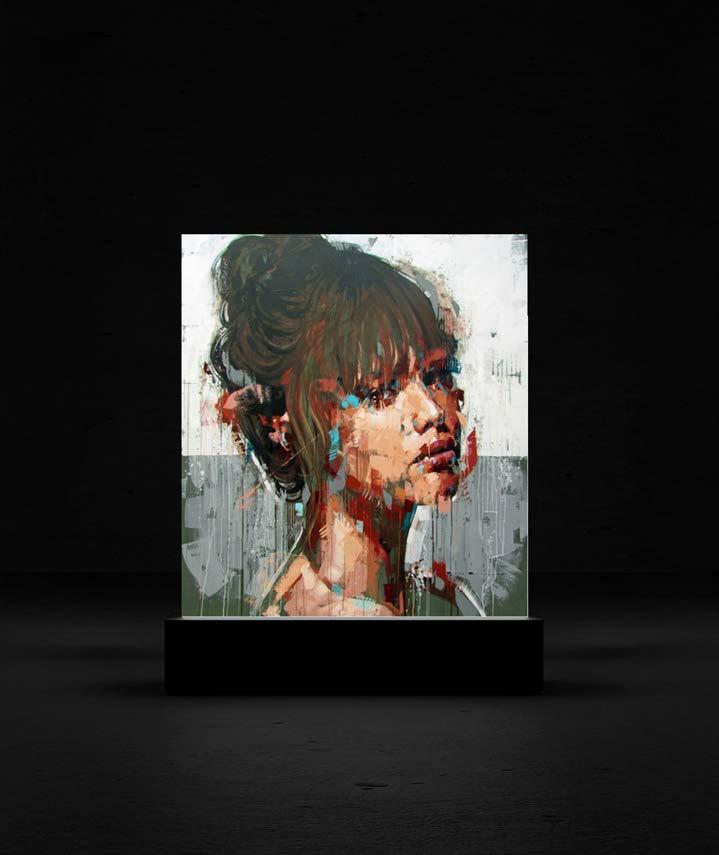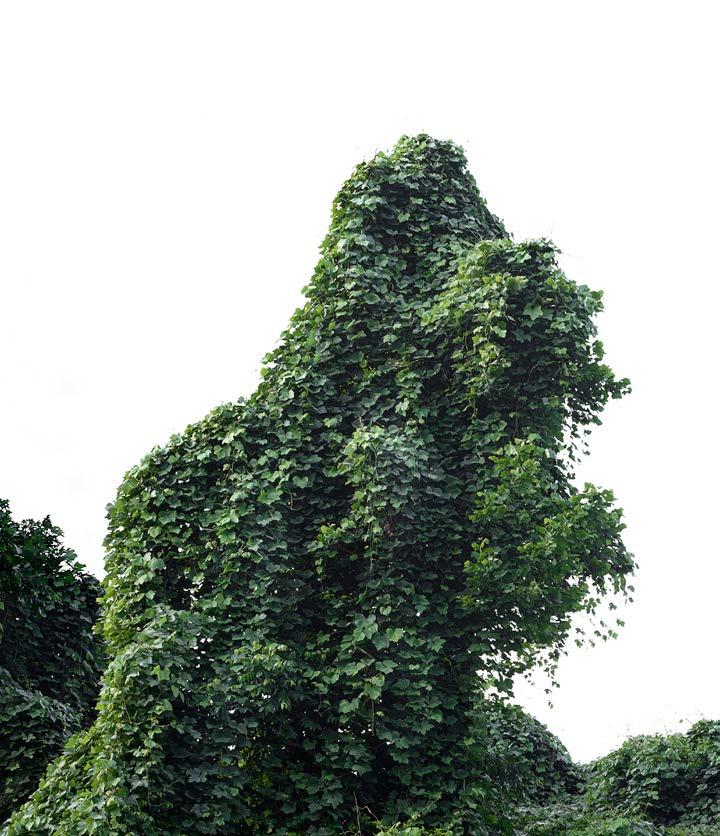


evelyn_richter_carrera
evelyn.richter.c@gmail.com




evelyn_richter_carrera
evelyn.richter.c@gmail.com
todo aquel que esta involucrado en el mundo de las visuales ha visto grandes cambios respecto a la manera de crear, dar a conocer y, por supuesto, comercializar las creaciones en los últimos años. Pero ¿cuáles son los motivos?, ¿cuáles son los factores que han generado este cambio rápido, imparable y posiblemente sin retorno? Muchos hablan de causas como el auge de las redes sociales y crecimiento del comercio electrónico en la pandemia, mientras otros lo asocian a problemas económicos en el globo producto de las guerras, del crecimiento del mercado del arte asiático, en contraste del americano.
Luego de la pandemia, el mercado del arte, tal como lo conocíamos, sobrevivió con dificultades. Entre las ferias de arte, prácticamente todas redujeron sus formatos, permitiendo así el ingreso de nuevas galerías y propuestas. Las galerías, por su parte, se redujeron o simplemente dejaron de asistir a estos mega eventos del mundo comercial por el gran gasto que implican y por el poco retorno que lograban con esta inversión. Si lo pensamos, el valor del stand, el traslado de las obras, la estadía y alimentación, el personal de apoyo, la difusión, y muchos otros, generan gastos interminables para situarse en un espacio donde la venta puede ser inexistente, ¿qué está pasando entonces en el mundo mercantil del arte?
Las galerías están adoptando nuevos formatos. Varias ya tomaron la difícil decisión de cerrar sus espacios físicos para dedicarse a la venta directa con sus clientes, llevándolos a los talleres de los artistas, asociándose con otros galeristas para compartir espacios de exposición, o moviéndose al mundo en línea. Este cambio ha perjudicado a las grandes y emblemáticas ferias. Algunas galerías se han asociado entre sí para, de manera paralela, competir con las ferias a través de inversiones más acotadas, con mejores retornos o, simplemente, por la versatilidad que les permite este formato, en cuanto a fechas y lugares.
Sabido es que nos encontramos en un fuerte periodo de transición. El avance de las nuevas tecnologías y el impacto de las redes sociales ha cambiado la forma que teníamos de entender el comercio y podemos observarlo en todo nivel. Sin lugar a dudas, estos debates y cuestionamientos deberían ser parte de la temática y las discusiones que inunden las calles de Miami en la semana del arte este año para Art Basel, así como las de España en 2025 cuando se celebre la aclamada Art Madrid. Esperamos que los conversatorios de los expertos aborden estas nuevas problemáticas, para ver qué rumbo tomará el mercado del arte y cómo podemos apoyarnos en estos nuevos desafíos.
Parte de los cambios y de las transiciones del mundo se reflejan en las páginas de esta edición. Nos encontraremos con reflexiones sobre la guerra, como en la obra de José Manuel Ciria; la importancia de la naturaleza, en la obra de Ángela Copello; y las reflexiones sobre la historia de la humanidad, en los trabajos de Carlos Castro Arias, Rodolfo Oviedo y Mustapha Romli.
anyone who is involved in the visual art world has seen great changes in the way creations are made, disseminated and traded over the recent years. But what are the reasons? What are the factors that have made this quick, unstoppable and possibly irreversible change? Many speak of causes such as the surge of social media and the growth of e-commerce during the pandemic, while others relate it to financial issues around the world due to war and the development of the Asian art market over the American.
After the pandemic, the art market that we knew struggled to survive. Virtually all art fairs reduced their size, as new galleries and proposals entered the scene. In turn, galleries also downsized or simply stopped attending the mega events of the trade world due to the large cost involved and the low return on investment. If we think about it, the value of the stands, transportation of artworks, accommodation and food costs, support staff, marketing, and many others create endless expenses to participate in a space where sales can never come. What is happening to the world of art trade?
Galleries and taking on new formats. Many have made the hard decision to close their physical spaces to bet on direct sales to their clients, taking them to artist studios and partnering up with other galleries to share exhibition spaces, or even jumping to online sales. This change has affected great and iconic art fairs. Some galleries have partnered to compete with fairs through smaller investments, better returns, or just because of the versatility this format allows in terms of dates and locations.
It is evident we are undergoing a marked transition period. The advent of new technologies and the impact of social media has changed the way we understood trade; we can see this at every level. Without a question, these debates and questions should be part of the theme and discussions to hit the streets of Miami this year during the week Art Basel is on, as well as those of Spain in 2025 when the acclaimed Art Madrid takes place. We hope that expert panels address these new issues to see what path the art market will take, and how we can support each other through these new challenges.
Some of the changes and transitions that the world is experiencing are featured in the pages of this issue. You will find reflections on war in José Manuel Ciria’s work, the importance of nature in Ángela Copello’s, and the history of humanity in the works of Carlos Castro Arias, Rodolfo Oviedo and Mostapha Romli.



Miami Beach Convention Center
December 6 - 8, 2024

Luciano Colman (Argentina, 1968). En sus obras y desarrolla proyectos que combinan arte y tecnología para conectar con el público y transformar diversos espacios. Se ha especializado en la integración de luz, tecnología y sonido, aportando una perspectiva única a sus proyectos.
Su experiencia como DJ, músico y productor lumínico le ha permitido explorar nuevas formas de expresión artística, especialmente en la creación de puestas en escena para recitales, eventos y obras de teatro. Su trabajo se ha presentado en importantes muestras en Miami y Buenos Aires, incluyendo las ferias MAPA y Affair. Además, ha expuesto en destacados lugares dentro de Córdoba, su ciudad natal; y participa en la colección del Museo de Arte Contemporáneo de Corrientes.
Su obra El Árbol de la Vida, es una experiencia audio visual de 4 metros y medio de altura por 4 metros de diámetro, incluye 120 pantallas LED, generadas a partir de una pantalla desarmada en mini-pantallas que representan las hojas del árbol, todo sincronizado para crear una experiencia visual única. Además, en la misma exhibición, presentó la instalación interactiva Talk to God.
djlucianocolman
lucianocolman@hotmail.com
DIRECTORES
Ana María Matthei
Ricardo Duch Marquez
DIRECTOR COMERCIAL
Cristóbal Duch Matthei
DIRECTORA DE ARTE Y EDITORIAL LIBROS
Catalina Papic
PROYECTOS CULTURALES
Camila Duch Matthei
EDITORA
Elisa Massardo
DISEÑO GRÁFICO
María Nestler
CORRECCIÓN DE TEXTOS
Javiera Fernández
ASESORES
Benjamín Duch Matthei
Ricardo Duch Matthei
Milagros Duch Matthei
Felipe Duch Matthei
REPRESENTANTES INTERNACIONALES
Julio Sapollnik (Argentina)
REPRESENTANTE LEGAL
Orlando Calderón
TRADUCCIÓN
Adriana Cruz
SUSCRIPCIONES
info@arteallimite.com
IMPRESIÓN
A Impresores
DIRECCIONES
Chile / Francisco Noguera 217 oficina 30, Providencia, Santiago de Chile. www.arteallimite.com
PORTADA
Ángela Copello.
VENTA PUBLICIDAD +56 9 99911933. info@arteallimite.com marketing@arteallimite.com
Derechos reservados
Publicaciones Arte Al Límite Ltda.












Por Elisa Massardo. Lic. en Historia y Estética (Chile) Imágenes cortesía de la artista. Argentina
Representada por Oda Arte.
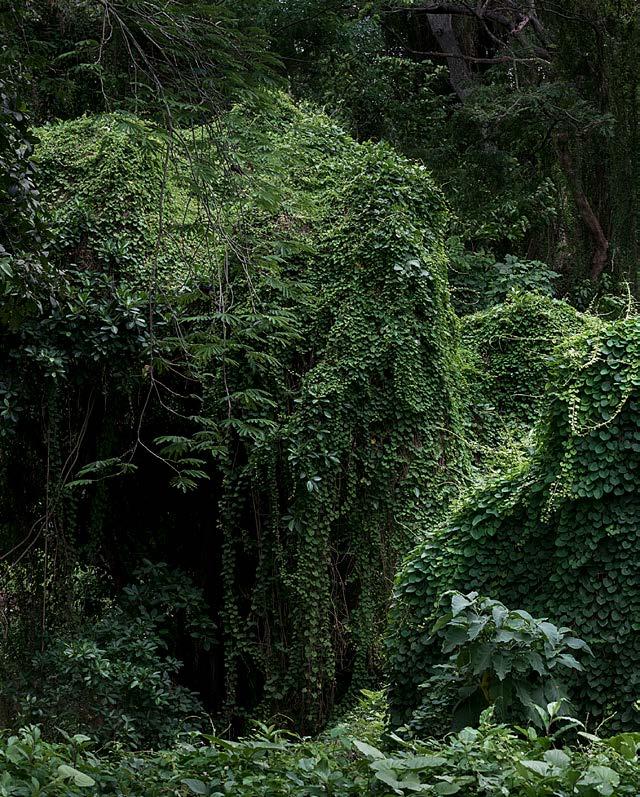
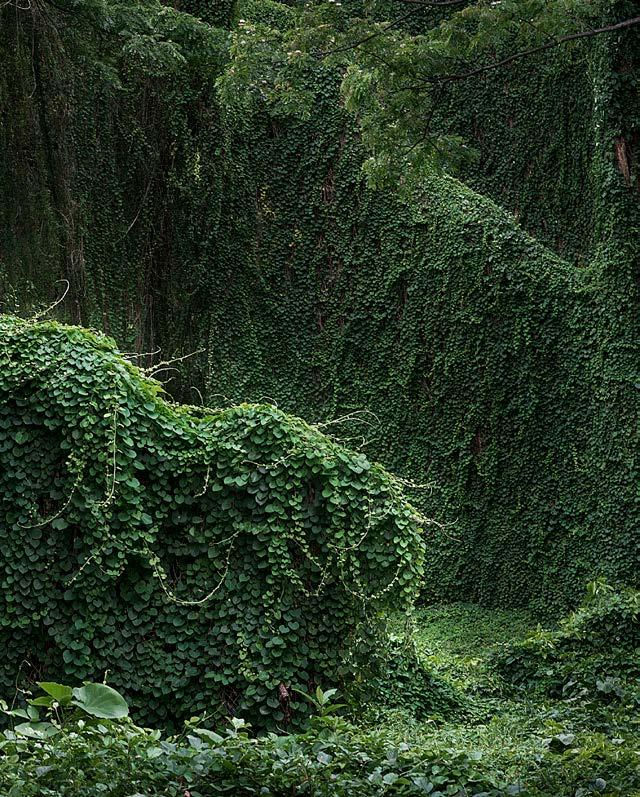
una vida ligada al paisaje y a la naturaleza llevaron a Ángela Copello a disfrutar del entorno sin intervenciones. Así, desde que comenzó a dedicarse a la fotografía, trabajó realizando imágenes para libros sobre el entorno natural, parques y jardines. “El contacto con la naturaleza me transmite la idea de vida y muerte en un círculo virtuoso”, explica la artista, quien ve estos ciclos con la holgura del renacer, del cuidado y de la espera.
Como fotógrafa, conoce bien los tiempos, las variables que se pueden controlar y aquellas espontáneas que surgen de cada toma. Para Ángela, la naturaleza es el origen de la vida y es consciente de lo positivo que es el contacto entre el ser humano y ese mundo que, en el romanticismo, se presentaba como un espacio enorme y amenazante, difícil de descubrir y de gobernar. Espacio que hoy, sin embargo, se ha dominado de manera brutal, eliminando muchas veces aquellos elementos positivos que trae implícito el contacto con “la sensación del viento, el olor de la tierra húmeda, o la visión de un mar inmenso”.
Desde ahí, Ángela Copello coincide con las nociones del posthumanismo que promueve “la idea de que los seres humanos son solo una de las muchas formas de existencia y que nuestras relaciones, con otros seres”, asumiendo que se debe respetar al resto de las especies. En sus fotografías, podemos observar cómo la naturaleza predomina y gobierna los espacios, independiente de las historias que puedan esconder estas hojas y plantas que protagonizan sus trabajos. Observamos un mundo donde la intervención humana pareciera desaparecer cada vez más, en una especie de mutación que invierte el sentido actual del mundo.
¿Cómo surge la necesidad de exponer a la naturaleza en primeros planos? La idea de fotografiar la naturaleza en primeros planos me permite descontextualizarla del paisaje, tratando de crear una conexión más profunda y consciente con el entorno. Intento crear una experiencia visual más íntima, resaltando la belleza intrínseca de elementos naturales. Un fragmento puede evocar sensaciones de misterio o introspección y, al aislar una sección del paisaje, este puede adquirir un simbolismo específico que en su contexto original puede perderse. Las imágenes en primer plano humanizan a los sujetos naturales, acercándolos a nuestra experiencia visual y emocional; los elementos individuales de la naturaleza adquieren mayor protagonismo.
alife surrounded by landscapes and nature led Ángela Copello to enjoy the unadulterated environment. Since she started working as a photographer, she has been creating images for books about the natural environment, parks and gardens. “Being in touch with nature communicates the idea of life and death in a virtuous circle to me,” the artist comments, explaining she understands these cycles in the phases of rebirth, care and waiting.
As a photographer, she knows these phases well, the variables that can be controlled, and the unknowns that spontaneously arise for each shot. For Ángela, nature is the origin of life, and she is aware of how positive the connection between humans and the natural environment can be. During the Romantic era, the environment was represented by vast and threatening spaces that were difficult to discover and rule. However, nowadays the environment has been brutally dominated, often undermining the positive elements that come with feeling “the touch of the wind, the smell of damp earth, or the sight of an endless sea.”
In light of this, Ángela Copello agrees with posthumanist notions that promote “the idea that human beings are just one of the many forms of existence” and that out “relationships with other beings” must be respectful of other species. In her photographs, nature prevails in the spaces and rules them, regardless of the stories that the plants and leaves that are prominently featured in her pieces might hide. We see a world where human intervention seems to disappear more and more, in a sort of mutation that reverses the current state of the planet.
How did the need to put nature in the foreground come about?
The idea to photograph nature in the foreground of my work allows me to decontextualize it from landscapes in an attempt to establish a deeper and more aware connection to the environment. I try to create a more intimate visual experience that highlights the inherent beauty of natural elements.
A fragment can evoke feelings of mystery or introspection and, by isolating a section of a landscape, it can acquire a specific symbolism that might have been missed in its original context. Foreground images humanize nature subjects, bringing them closer to our visual and emotional experience. Thus, individual elements of nature take on greater prominence.
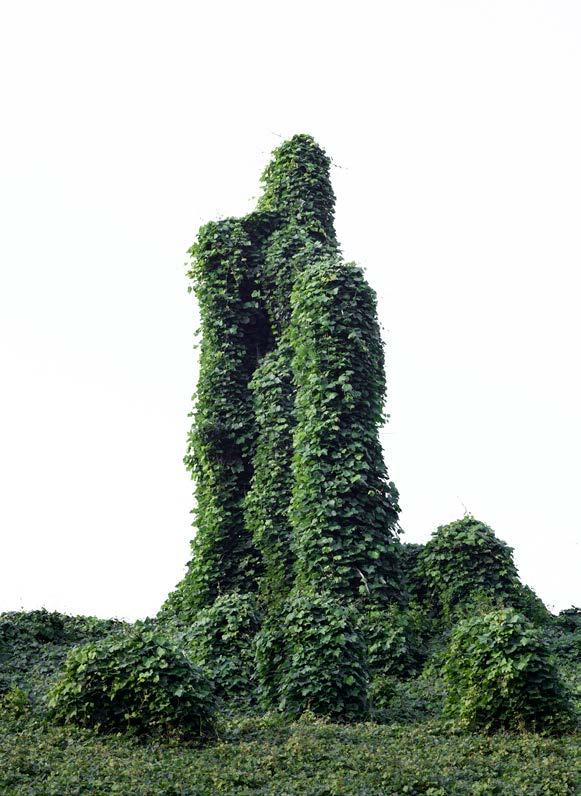

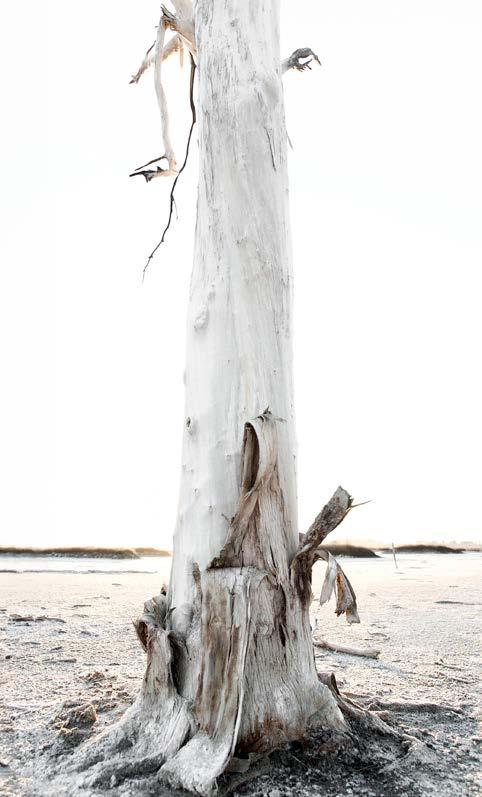
Con los primeros planos, puedo transmitir una sensación más potente de textura, forma y color, que quizá se perdería dentro de un entorno más complejo. Además, este recurso me permite transformar un objeto natural en una pieza casi escultórica.
¿De qué manera consideras que el arte puede ayudar a generar consciencia sobre el cambio climático y por qué?
El arte tiene el potencial de ser una herramienta poderosa para movilizar y motivar a las personas respecto de la importancia de cuidar a nuestra tierra. Puede despertar conciencia y generar emoción para que el público sienta una mayor urgencia y responsabilidad en cuanto a esta necesidad.
El arte nos pone frente a una realidad que nos conmueve y nos interpela. Mi trabajo habla acerca de la supervivencia y sobre cómo la intromisión perjudicial del hombre en la naturaleza, junto a la desidia política, generan un enorme daño.
En la serie El poder del l í mite – Kudzu muestras la realidad dual de la naturaleza. La apropiación de una especie a través de otra; el mundo parasitario. ¿Cómo llegaste a esta investigación? Mi serie anterior, Edén, comenzó con la búsqueda de bolsones de flora nativa que permanecen vírgenes dentro de cultivos intensivos, cercanos a pueblos y ciudades. Mi idea no era mostrar ese diálogo, sino plasmar un universo donde querer quedarse, donde encontrar un origen, donde uno puede tener un diálogo con uno mismo y con algo superior. Fue buscando escenarios para esta serie que me crucé con el kudzu ( Pueraria lobata ), una enredadera perenne, originaria de Oriente, que se introdujo en los Estados Unidos en 1876 y fue promovida por el gobierno como una “planta maravillosa” para alimentar al ganado. Hoy cubre más de un millón de hectáreas. Cuando el Kudzu invade, cubre otras especies hasta ahogarlas. Es capaz de transformar paisajes enteros, es un ejemplo de la dualidad de la naturaleza. La belleza del Kudzu es, paradójicamente, su peor enemiga: representa un recordatorio vívido de la importancia de comprender y controlar las consecuencias del hombre en el ecosistema. Viajé al sudeste de Estados Unidos para fotografiar ese paisaje a la vez maravilloso y macabro.
With foregrounds, I can convey more powerful feeling for texture, shape and color, that might have been lost in a more complex environment. Additionally, this resource allows me to transform a natural object into an almost sculptural piece.
How do you consider that art can help raise awareness of climate change and why?
Art has the potential of being a powerful tool to mobilize and motivate people about the importance of taking care of our land. It can awaken awareness and stir emotions to make the public feel a greater sense of urgency and responsibility for this need.
Art confronts us with a reality that moves and challenges us. My work speaks on survival and how humans’ damaging intrusion into nature, as well as political apathy, causes great harm.
In the series El poder del límite – Kudzu (The Power of Limits – Kudzu), you show the dualistic reality of nature: the appropriation of one species through another; the parasitic world. How did you come to this topic?
My previous series, Edén ( Eden ), started with a quest for patches of native flora that remained undisturbed within intensive farming crops, close to towns and cities. My idea wasn’t to showcase that conversation, but to capture a universe where we would want to stay, find an origin, have a conversation with ourselves and with a higher power.
While looking for locations for this series, I found a kudzu (Pueraria lobata) , a perennial vine native to the East that was introduced in the US in 1876 and advertised by the government as a “wonderful plant” to feed livestock. Today, it covers over a million hectares.
When Kudzu invades, it covers other species until it drowns the out. It is capable of transforming entire landscapes; it is an example of the duality of nature. The beauty of Kudzu is that it is paradoxically its own worst enemy: it represents a vivid reminder of the importance of understanding and controlling the consequences of humans’ actions in the environment. I traveled to the south east of the US to shoot that landscape that is both marvelous and macabre.

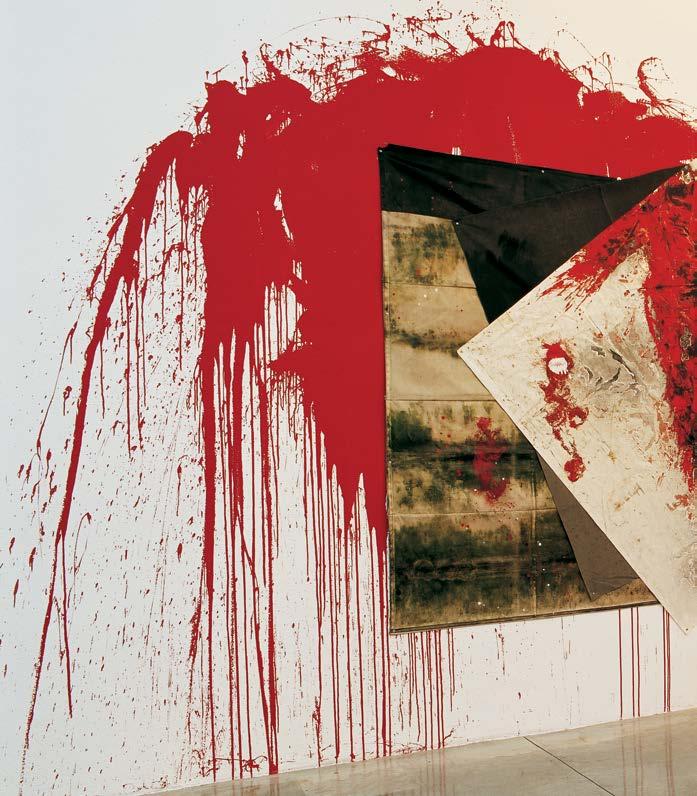
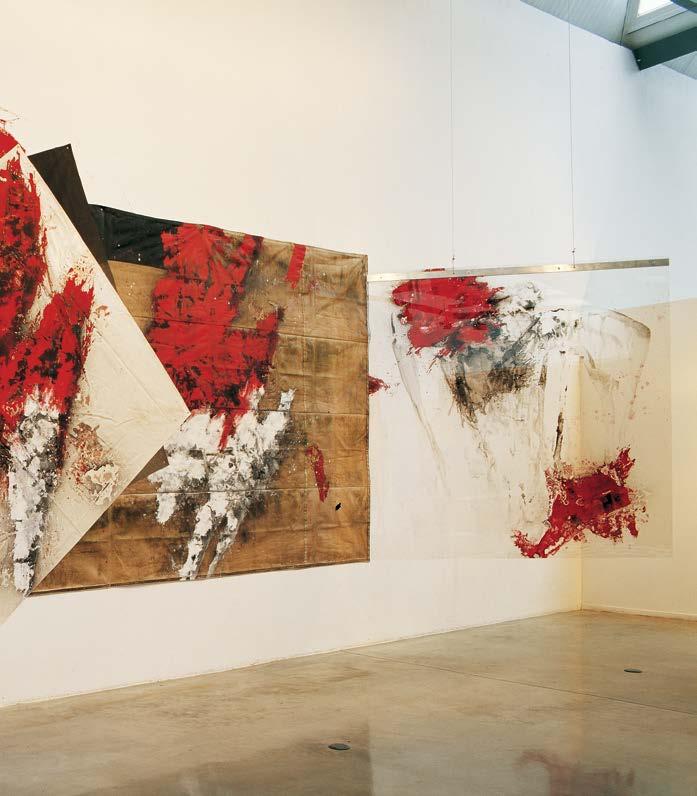
Por Elisa Massardo. Lic. en Historia y Estética (Chile) Imágenes cortesía del artista. España
el horror no se puede graficar de manera literal. Ni con palabras, ni con dibujos. Varios artistas a lo largo del siglo XX han planteado que la mejor forma de exponer las aberraciones que han ocurrido (y siguen ocurriendo), contra el ser humano, es de forma metafórica. Algo que genere impacto, que no sea armónico, que perturbe, que cueste entender lo que estás viendo y tengas que pensar al respecto, reflexionar sobre el color y las formas, mientras ves aquello que es realmente inentendible, así como el genocidio, la guerra o las millones de muertes de civiles por causas político-económicas. Así comienza la obra cruda y totalmente política de José Manuel Ciria.
“Somos animales políticos, quizás más conscientes desde la Revolución Industrial. La abstracción, nunca ha sido el mejor vehículo para expresar ideas concretas”, señala mientras reflexiona sobre la guerra de Ucrania en una obra de gran formato. Pintura, capas de pintura de color rojo intenso, “tiene tanta intensidad y dolor que consigue empatar con la atmósfera grave y deprimente del Guernica”, explica.
Nació en Manchester, en sus palabras, “la ciudad más fea del planeta”, pero siente que carga con la cruz española, aquella que implica que un problema grave te persigue de forma perpetua. Cuando le pregunto sobre su infancia, rápidamente recuerda aquel momento fatídico de la niñez que, lamentablemente, muchas personas vivieron con, sí, una profesora del colegio. “Me destrozó la vida, había que copiar una lámina con un elefante metido en una trampa y un tigre dientes de sable. En la pared del aula, había un gigantesco corcho donde la profesora pegaba con chinchetas los dibujos de todos los alumnos. Yo fui a buscar mi pequeño trabajo y no lo encontré. La profesora había enmarcado el papel con una cartulina naranja y lo había colocado en otra pared solo y apartado del resto, aquello me marcó. Me gusta bromear que me causó bastantes daños cerebrales”, explica.
Y es que la incomprensión sobre lo que es el arte es enorme en todo el mundo. La añeja idea de la mímesis que el hiperrealismo ha traído de nuevo al mundo; la vieja idea de que la representación debe ser lo más fidedigna a la realidad; la vieja idea de que el artista debe ser evaluado constantemente por sus pares, por agentes del arte, por el mercado. La idea de que la pintura ha muerto, pero de forma permanente escuchamos decir: “la pintura volvió con todo”, ¿de qué estamos hablando?
Seguimos profundizando en la vida de Ciria y explica que llegó a España cuando tenía 8 años y medio. “Me encuentro desubicado, pero tuve la suerte de tener un profesor magnífico que tenía la sensibilidad y las ganas de empujar a sus alumnos en la dirección donde objetivamente más desta-
horror cannot be represented literally. Not with words nor with drawings. Throughout the 20th century, several artists have postulated that the best way of exposing the abominations that have happened (and keep happening) against human beings is metaphorically. It must be something impactful, something that is not harmonic, that is disturbing, that makes it hard to understand what you are experiencing and forces you to think about it, reflect on the color, the shapes, while you look at something beyond comprehension like genocide, war, thousands of civilian deaths due to political and economic causes. That is how José Manuel Ciria’s crude and utterly political work starts.
“We are political animals, perhaps a more aware since the Industrial Revolution. Abstraction has never been the best vehicle to express concrete ideas,” he states, as he ponders on the war in the Ukraine on a large-scale piece. Painting, coats of bright red paint with “such intensity and pain that it manages to match the serious and depressing atmosphere of Guernica,” he explains.
He was born in Manchester, which, in his own words, is “the ugliest city in the planet,” but he feels that he bears a Spanish cross, the one that implies that a serious problem that forever follows you. When I ask him about his childhood, he quickly recalls a fateful moment that unfortunately many have experienced with none other than a school teacher. “I ruined my life. We had to copy a picture with an elephant in a trap and a saber-toothed tiger. On the classroom wall, there was a giant cork board where the teacher put up the all the students’ drawings with thumbtacks. I went to look for my assignment and I didn’t find it. The teacher had framed the piece of paper with orange cardboard and put it on another wall by itself, aside from the rest, and that shaped me. I like to joke that it caused me quite a bit of brain damage,” he explains.
Misunderstanding what art really is happens widely all over the world. There are these old ideas that the mimesis in hyperrealism has brought to the new world: the old idea that representation must be as faithful to reality as possible, the old idea that artists must be constantly assessed by their peers, art agents, and the market. The idea that painting is dead, and yet we are constantly hearing: “Painting is back with a bang.” What are we talking about?
As we continue delving into Ciria’s life, he explains that he arrived to Spain when he was 8 and a half years old. “I found myself displaced, but I was fortunate to have a superb teacher who had the sensitivity and desire to push students in the direction where they objectively excelled the
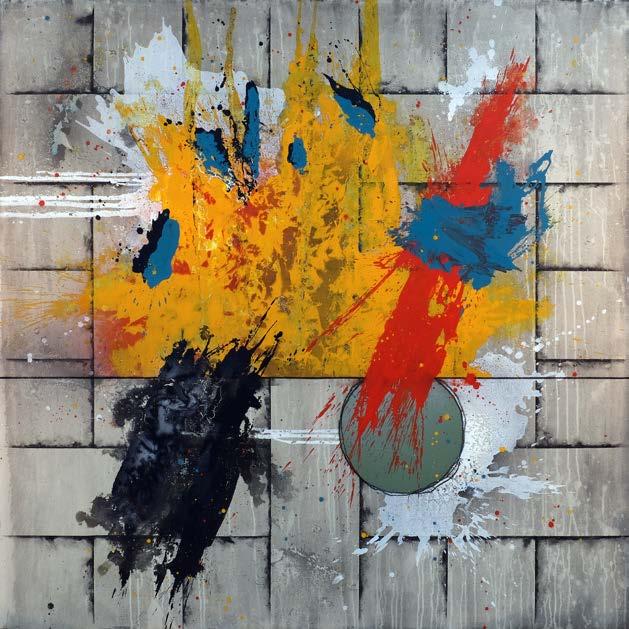

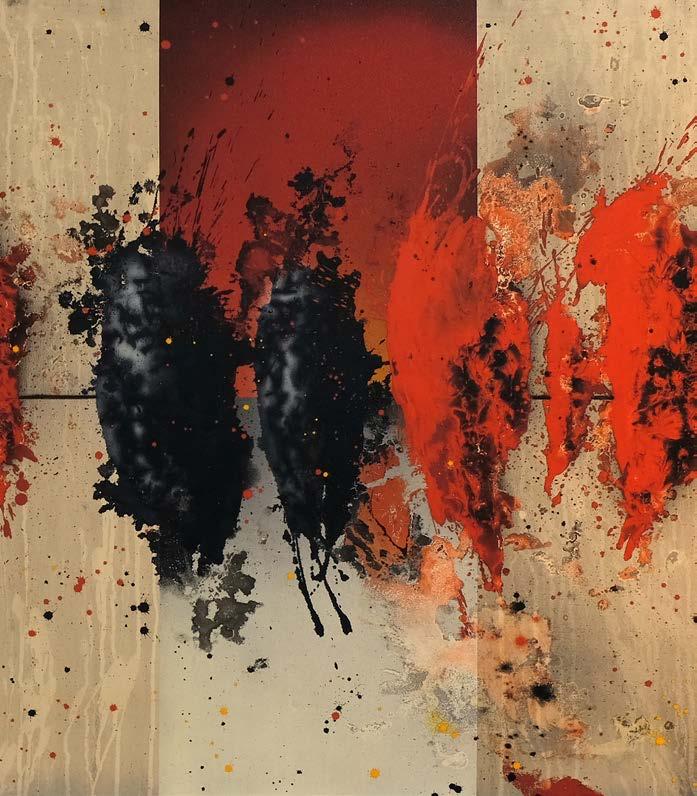
caban, tanto en asignaturas como en deporte”. Claramente, él nunca hizo gimnasia, se pasaba las clases haciendo dibujos con los temas que iban pasando en cada asignatura, aún y cuando trataran sobre religión o tuviera que subirse en banquetas para llegar a la parte superior de la pizarra. “Siempre he pensado que esta profesión me cayó como un castigo. No tuve que decidir nada, no tuve elección”, explica, mientras recuerda que hay una obra que lo impactó de niño: Saturno devorando a su hijo, de Goya, “¿Cómo con unos pocos pigmentos se puede representar el terror de una pesadilla?”
En esta entrevista exclusiva, seguimos profundizando en los conceptos que atraviesan sus pinturas.
¿De qué forma los acontecimientos políticos van marcando tu obra?
Hay algo importante. Cuando Hitler, después de haber sido rechazado cuatro o cinco veces por la Academia de Bellas Artes austriaca, años después manifestó que todo pintor que utilice el verde para representar el cielo y el azul para representar la hierba, debería ser esterilizado. Si la brutalidad de la cita te conmueve y te sientes agredido espiritualmente, es incomprensible que puedan existir artistas, después de la gran revolución del periodo de entreguerras del siglo pasado, que quieran volver a colocar los colores en su lugar natural. Nadie debería, jamás, volver a pintar un cielo azul, en un simple posicionamiento político. Para mí es fácil decirlo, siendo abstracto y habiendo admirado a los fauvistas.
¿Cómo vincular la política a tu pintura?
Me gusta que sigamos con el mismo tema. Con lo que acabo de narrar ahora, puedes entender mi visión y creo que es generalizada. En el arte, la política se posiciona en otro lugar diferente al que lo hace en la sociedad civil actual. No es izquierda, ni derecha, no se trata de partidos ni de ideologías, no es algo de simpleza filosófica. Pienso que de la misma forma que los artistas durante gran parte del siglo XX pensaron que podían transformar la sociedad, cuando sabemos que se produce siempre el movimiento inverso, no importa querer ser ingenuo o naïf, intento percibir firmemente que podemos volver a un punto de partida, en el que nuestro pensamiento de artistas y de todo el resto de actividades, seamos capaces de transformar el mundo. Es una cuestión de abrir los ojos y nuestra mente para organizarnos de otra manera. O conseguimos superar la democracia o será el fin de nuestra era.
En mi pintura, intento muchas veces representar sentimientos, posturas, ideas u obsesiones que tengo en la cabeza, aunque repito, lo abstracto
most, both in subjects and in sports.” He clearly never did gymnastics, he spent his time in class drawing the contents of each subject, even for religious subjects, or even if he had to climb on stools to reach the top of the board. “I have always thought that this profession fell on me as a punishment. I didn’t have to decide anything, I had no choice,” he explains, as he remembers a piece that shocked him as a child: Saturn Devouring His Son by Goya. “How can a few pigments represent the terror of a nightmare?”
In this exclusive interview, we continue to delve deeper into the concepts that run through his paintings.
How do political events shape your work?
There is an important fact. Hitler, years after being rejected four or five times by the Austrian Academy of Fine Arts, stated that any painter that used green to depict the sky and blue to represent grass should be sterilized.
Unless you are moved by the savagery of the quote and feel spiritually attacked, it can be hard to understand that there can be artists after the great revolution of the period between the wars of the last century who want to return colors to their natural place. Nobody should ever paint a blue sky just as a political stance. For me, it’s easy to say, because I’m an abstract painter and I admire Fauvists.
How do you link politics to your work?
I like we’re still on the same topic. With what I just told you, I think you can understand my vision, and I believe it is generalized. In art, politics are positioned in a different place than in our current civil society. It’s not left-wing or right-wing. It’s not about parties or ideologies. It’s not something of philosophical simplicity. I think the same way artists during most of the 20th century thought they could transform society. However, we know that the opposite always happens. Regardless of whether it seems naive, I try to firmly believe that we can go back to the starting point, where our thinking as artists and as people from all other activities is that we are capable of transforming the world. It’s only a matter of opening our eyes and minds to organize ourselves differently. Either we manage to overcome democracy or it will be the end of our era.
In my painting, I try to represent feelings, stances, ideas or obsessions I have in my head. As I said, abstraction is not the best place to do it,
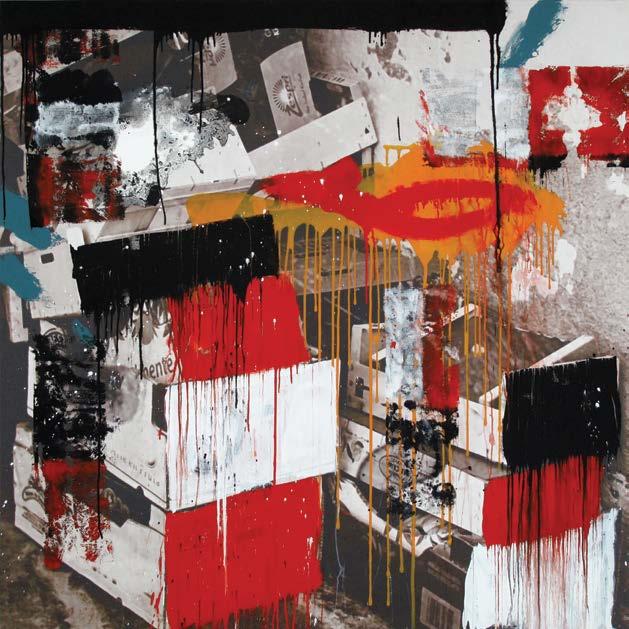
no es el lugar idóneo para ello, pero además, tengo grupos de trabajo enteros dedicados a la política, como la serie Palabras. A la vez hay sendas carpetas llenas de collages donde los protagonistas son la política, la cultura y la religión. Llevo años trabajando con estos objetivos.
En un mundo donde el arte contemporáneo se basa en las investigaciones mostradas a través de formas conceptuales y abstractas, ¿cómo sientes que tu pintura tiene sentido ante el espectador?
Yo no tengo ese tipo de preocupación, me ha venido dado. A pesar de que nací en 1960, me considero hijo de mayo del 68, por lo que de joven, cuando decidí ser artista, necesitaba dotarme de una plataforma de sustentación donde pudiese organizar mis propias ideas. Aparecieron en los años 80 una serie de notas, observaciones y búsquedas de lo que quería pintar e investigar, para aceptarme a mí mismo como artista. Todo ello, fue recogido en el Cuaderno de Notas – 1990, que durante esa década provocaría el desarrollo de mi primera Plataforma Teórica A.D.A. (Abstracción Deconstructiva Automática).
Estas siglas de A.D.A. empezaron a bailar, la voluntad y la obsesión era crear un nuevo marco de pensamiento en pintura. Al final las letras se recolocaron en D.A.A. y después inmediatamente cobraron sentido, conectándolas con las investigaciones que estaba llevando a cabo, Dinámica de Alfa Alineaciones, un aparato diferente que resulta ser una máquina de rayos X para dominar todos los elementos que conforman estructuralmente una pintura. Después llegaría una tercera plataforma A.A.D. de voluntad figurativa. Parece un oxímoron decir que me considero un pintor conceptual. Creo que cuando un espectador se enfrenta a mi trabajo, percibe con bastante claridad que detrás de la superficie existe un inmenso entramado de pensamiento e investigación.
Después de tantos años trabajando, ¿qué es para ti ser pintor?
Percibo mi profesión como una suerte de misión mesiánica. Me tomo muy en serio, primero, no defraudarme a mí mismo y, después, no defraudar a ninguna de las personas que me han apoyado. Como encima, estoy dotado de un ego de formato considerable, no contento con crear una sola plataforma teórica cuyo fruto era ser una máquina de dictar pinturas. Quise dotarme de un nuevo pensamiento, y durante años, a partir del 2000, empecé a desarrollar nuevas ideas. He intentado incluso encontrar apoyo entre todos los críticos de arte que conocí en aquel momento y que lamentablemente no terminaban de entender mi aspiración. Así, un amigo de toda la vida, que me acompaña (Juan Stefa), puntualiza que debo hacer memoria e incluir la palabra “exigencia”. Es cierto, siempre he sido muy exigente con mi trabajo.
but I have entire bodies of work dedicated to politics, such as the series Palabras (Words) or the large folders I’ve created with collages where politics, culture and religion take on a leading role. I’ve been working with these goals for years.
In a world where contemporary art is based on research shown through conceptual and abstract means, how do you feel your painting makes sense to the viewer?
I don’t have that kind of concern, it came organically. Although I was born in 1960, I consider myself a child of May 68, so as a young man, when I decided to become an artist, I needed to provide myself with a platform where I could organize my own ideas. In the 80s, a series of notes, observations, and explorations of what I wanted to paint and investigate in order to accept myself as an artist appeared. All this was compiled in Cuaderno de Notas – 199 0 (Notebook – 1990) which back then led me to develop my first ADA Theoretical Platform (Automatic Deconstructive Abstraction).
Those initials, ADA, started to dance, and the will and obsession was to create a new thought framework for painting. Ultimately, the initials were reorganized to make DAA, and they immediately made sense, connecting them to the research I was conducting, Dynamics of Alpha Alignments. This was a different device that ended up being an X-ray machine to dominate all the elements that structurally make up a painting. Then came a third AAD platform of figurative will. It seems like an oxymoron to say I consider myself a conceptual painter. I think that when viewers encounter my work, they clearly perceive that behind the surface there is an immense web of thought and research.
After so many years working, what does it mean to be a painter for you?
I see my profession as a sort of Messiah’s mission. I take it very seriously to first, not to let myself down and, second, not to let down any of the people who have supported me.
As I am also endowed with a considerably large ego, I wouldn’t have been content with creating a single theoretical platform whose outcome was to be a machine for dictating paintings. I wanted to give myself a new way of thinking, and for years, starting in 2000, I began to develop new ideas. I even tried to find support among all the art critics I met at the time, who unfortunately did not fully understand my aspiration. A life-long friend of mine (Juan Stefa), who is with me, pointed out that I should remember to include the word “demand.” It’s true, I have always been very demanding with my work.



Por Ricardo Rojas Behm. Escritor y Crítico (Chile)
Imágenes cortesía de la artista. Representada por Building Bridges Art Exchange.

reconocer el curso de acción que va tomando nuestra existencia es una incógnita que en contraste a una ecuación matemática puede tomarnos la vida entera despejar. Una faena complementaria a lo dicho por Giorgio Agamben: “La verdad no se encuentra en los hechos, sino en la interpretación de los mismos”. Lo que presupone una construcción del entorno en la que querámoslo o no, se transforma en una mixtura ecléctica, donde reconocemos en el arte esa verdad ineludible, en la que Carla Viparelli, artista visual italiana, se entrega por completo con su particular visión. “Nací en Nápoles. Una ciudad poderosa, una bomba a los pies del Vesubio. Una metrópolis y un lugar arcaico, sus raíces son indomables y los cimientos de los rascacielos nunca podrán sofocarlas. El estudio de Nápoles está en los Quartieri Spagnoli, un barrio obrero muy característico de alta densidad. Por otro lado, siempre he tenido la necesidad de vivir inmersa en la naturaleza, pero no la busco como evasión de la realidad, sino como lección de un entorno más verdadero. La ciudad a menudo engaña. Creo que es importante poder experimentar las dos formas de vida. Pudiendo elegir de vez en cuando la que te hace sentir más vivo”.
¿De qué manera los cuadernos donde recopilas ideas de proyectos y bocetos forman parte de ese postulado donde el arte es un viaje de conjuntas experiencias y conocimiento?
No hay dualismo entre el arte y la vida. Para mí, el arte es una forma de ser, que siempre me ha acompañado. Es un flujo sensorial y mental que registro en cuadernos que recogen las instantáneas, las imágenes fijas, como detectores constantes de datos hidrológicos. El arte no tiene principio ni fin, ni
unlike a math equation, identifying the path our existence should follow is an unknown that can take us our entire lives to solve. Giorgio Agamben spoke on this endeavor: “Truth is not found in the facts, but in their interpretation.” This implies a construction of the environment that, whether we want it or not, transforms into an eclectic fusion where we recognize an inescapable truth in art. Carla Viparelli, Italian visual artist, surrenders completely to this with her own vision: “I was born in Naples, a powerful city, a bomb at the foot of Mount Vesuvius. It is a metropolis and an archaic place; its roots are unbreakable and skyscrapers will never suffocate it. My studio in Naples is located at Quartieri Spagnoli, a traditional and highly populated working-class neighborhood. Conversely, I’ve always needed to live surrounded by nature, but I don’t seek it to escape reality, but rather as a lesson in a more ‘truthful’ environment.” Cities can often be deceitful. I think it’s important to experience both lifestyles and occasionally choose the one that makes you feel the most alive.”
How are your sketchbooks compiling your ideas and sketches part of the notion of art being a journey of shared experiences and knowledge?
There is no duality between art and life. For me, art is a way of being that has always been with me. It is a sensory and mental flow that I record in my sketchbooks with snapshots and static images, like perpetual trackers of water data. Art has no beginning nor end; it doesn’t start nor end with

empieza ni acaba conmigo. Soy una estación de paso. El arte es colectivo, ya que genera incesantemente una comunidad supranacional que cambia y evoluciona en tiempo real. El arte es a la vez un medio y un fin: es una forma de estar en el mundo que transforma cada objeto en un proyecto.
Esta artista exhorta la realidad con un quehacer artístico que, en definitiva, se convirtió en un motivo para existir y que se fue incubando desde su infancia, cuando su padre le obsequió una caja de pinturas al óleo, y de ahí en adelante se fueron añadiendo una serie de exponentes del arte universal que decretaron un antes y un después en su obra. Eso sin contar aquellos que, por así decirlo, fue absorbiendo casi por osmosis, por el hecho de tener como telón de fondo la emblemática ciudad de Nápoles.
¿Qué puedes decirme sobre tus referencias artísticas?
La referencia artística que determinó un punto de inflexión para mí fue Joan Miró, a quien conocí mientras estudiaba para un examen de Historia del Arte Contemporáneo en la Universidad de Nápoles. Estudiando entendí el mecanismo de su visión, descifré su lenguaje. Miró tenía una función didáctica. Fui a Barcelona, a la Fundación Miró, y a partir de entonces comenzó una experiencia consciente del arte. Otro momento importante fue cuando me enfrenté al cuadro «Flandern» de Otto Dix en Berlín: allí no fue didáctica sino impacto total: la desesperación de la guerra que devuelve el sentido profundo de estar en el mundo. Para mí, las referencias más significativas proceden de la filosofía: Kant, los presocráticos, Platón, la metafísica.
me. I’m a transit station. Art is collective, as it never ceases to create a supranational community that changes and evolves in real time. Art is both means and end: it’s a way of being in a world that transforms all objects to projects.
This artist enliven reality with her artistic endeavor, which became her reason for existence and has brewed since her childhood, after her father gave her a box of oil paint. Since then, a series of icons of world art have inspired her, marking a clear before and after in her work. Some other referents she absorbed unintentionally, almost by osmosis, just from her having the emblematic city of Naples as her backdrop.
What can you tell me of your art inspirations?
The one that represented a turning point for me was Joan Miró, who I learned about while I was studying for a contemporary art history exam at the University of Naples. By studying, I understood the inner workings of his vision; I decoded his language. Miró had a didactic function. I went to Barcelona, to the Miró Foundation, and from there I experience art more with awareness. Another important moment was when I saw Fladern by Otto Dix in Berlin. In that case, it wasn’t about didactics, but total impact: the despair of war that restores a deep sense of being in the world. For me, my most significant referents come from philosophy: Kant, Pre-Socratic philosophers, Plato, metaphysics.
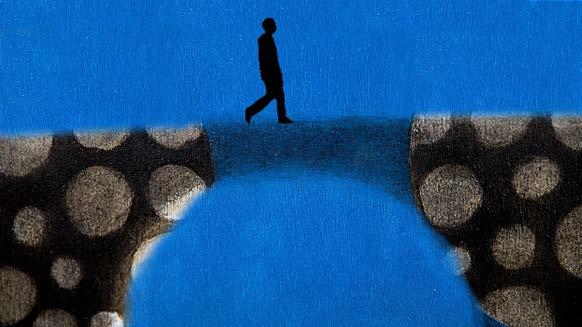
En tu vasta trayectoria, ¿cómo logras unir esta doble pertenencia entre el pensamiento científico-filosófico y el pensamiento artístico o estético?
Cuando profundizo en un tema, como el silicio en Silicosophy, paso horas y horas estudiando. Y cuanto más estudio, más descubro mundos. Descubro similitudes inesperadas como, por ejemplo, entre el comportamiento de los átomos de silicio y el de los aficionados que hacen cola para entrar en el estadio. Y la conexión y superposición de diferentes órdenes de realidad es la base de mi investigación figurativa, que es por tanto multidimensional.
Exploras el lado estético de la ciencia y la estética del cambio, de una realidad a otra, y la belleza en el acto de modificación y representación “humanizando” aquello que simula no tener vida. En ese contexto, ¿cómo definirías la belleza de nuestros compañeros cotidianos: teléfonos celulares, paneles solares, vidrio, microchips, sales o geles de silicona?
La expresión “estética del cambio de una realidad a otra”, representa muy bien mi trabajo. El silicio es un emblema ideal de todo esto porque, por un lado, es un elemento que existe en la naturaleza (arena, diatomeas, cola de caballo, etc.) y, por otro, es el componente fundamental de toda tecnología de la información porque, convenientemente tratado, es capaz de transmitir una cantidad infinita de información. Por tanto, el mismo elemento está en la base, tanto de una cadena de procesos naturales como de una cadena de procesos tecnológicos artificiales. Es una piedra filosofal capaz de generar mutaciones alquímicas.
In your long career, how do you manage to connect this dual belonging to both scientific-philosophical thinking and artistic or aesthetic thinking?
When I delve into a topic, like I did with silicon in Silicosophy, I spend hours and hours studying. The more I study, the more I discover worlds. I discover unexpected similarities between the behavior of silicon atoms and that of the fans standing in line to enter the stadium, for instance. The connection and overlapping of different orders of reality is the basis of my figurative research, which therefore is multidimensional.
You explore the aesthetic side of science and change, from one reality to another, as well as the beauty in modification and representation, “humanizing” what seemingly has no life. In that context, how would you define the beauty of our daily companions: cellphones, solar panels, glass, microchips, silicon salts or gels?
The expression “aesthetics of change from one reality to another” represents my work very well. Silicon is an ideal emblem of all this because, on the one hand, it is an element that exists in nature (sand, diatoms, horsetail, etc.) and, on the other hand, it is the fundamental component of all information technology because, when properly processed, it is capable of transmitting an infinite amount of information. Thus the element is at the core of both a series of natural processes and artificial technological processes. It is a philosopher’s stone capable of creating
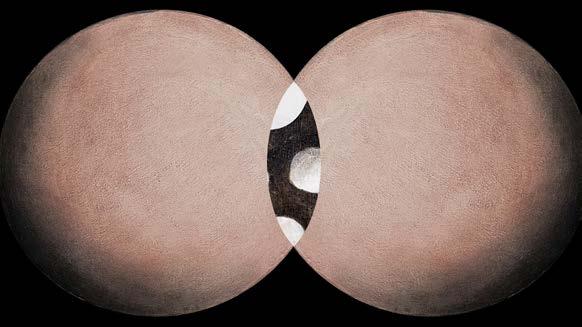
Es similar a la glándula pineal de Descartes, en la que res cogitans y res extensa, pensamiento y naturaleza, encuentran su equilibrio. Todo esto es para mí la belleza: una iluminación, una revelación, una intuición profunda que llega sin que la hayas buscado y que te hace ver las cosas de otra manera.
Has extrapolado el concepto de “Zona Franca” incursionando en un ámbito mercantil, económico/geopolítico para multiplicarlo en otros contextos de carácter semántico, geológico, filosófico, metafórico, ¿de qué forma eso se conecta con Mimesis o Silicosofia u otros proyectos vinculados con la naturaleza, revelando identidades ocultas a través de símbolos y metáforas?
Me fascina el hecho de que la dinámica del mundo natural revele mecanismos profundos que también funcionan en otros contextos, como la política, la historia, la lógica, la lingüística, entre otros. La filosofía y el arte, con métodos diferentes, tienen la capacidad de investigar y profundizar en estas leyes comunes de funcionamiento, que yo llamo “los secretos de la naturaleza”. Me interesa ir más allá de la apariencia de lo múltiple para captar similitudes y conexiones a veces imprevisibles entre realidades diferentes.
Tomando el paralelismo entre pensamiento y naturaleza. ¿Cómo integras lo análogo con lo digital o performances como “Falso movimiento”? El encuentro con las nuevas tecnologías ha sido decisivo en mi investigación artística. Forman parte del proceso creativo de cada una de mis obras, ya sea en la fase de diseño, en un óleo, o como producto
alchemical mutations. It is similar to Descartes’ pineal gland, where res cogitans and res extensa –thinking and nature– find a balance. Beauty is all this to me: enlightenment, a revelation, a profound intuition that comes unsought and makes you see things in a different way.
You have extrapolated the concept of “Free Trade Zone” by venturing into a mercantile, economic/geopolitical sphere and replicating it in other contexts of a semantic, geological, philosophical, metaphorical nature. How does this relate to Mimesis, Silicosophy, or other projects linked to nature, revealing hidden identities through symbols and metaphors? I’m fascinated by the fact that the dynamics of the natural world reveal profound mechanisms that also work in other contexts, such as politics, history, logic, and linguistics, among others. Both philosophy and art, though with different methods, have the ability to research and explore these common laws of operation that I call “nature’s secrets.” I’m interested in going beyond the appearances of multiplicity to catch similarities and sometimes unpredictable connections between different realities.
Bearing in mind this parallel drawn between thinking and nature, how do you bring together analog with digital or performances like False Motion? Encountering new technologies has been decisive in my artistic research. They are part of the creative process of all my artwork, whether in the design phase of an oil painting,

artístico final o, incluso, en la animación de vídeos. Para hacer una animación en vídeo parto de mis obras «físicas» (dibujos o pinturas). El tratamiento digital las pone en movimiento como por arte de magia. A menudo, durante el proceso, extraigo algunos momentos del flujo de la animación, los aíslo y los pinto. Y así cierro el círculo que empieza con la destreza manual, pasa por la electrónica y luego vuelve a la destreza manual. Es como tener muchas más herramientas a mi disposición: no sólo la pintura, sino también el software, el gesto, la acción escénica. De este modo, la elección de la mejor manera de expresar una visión o un concepto es más amplia y, en consecuencia, el resultado es mejor.
¿Crees que con tu obra invitas a las generaciones futuras a mirar al pasado y aprender de las experiencias? Pensando en rescatar la belleza de realidades venideras?
Claro que sí. Creo en el injerto. El pasado genera el futuro cuando se injerta adecuadamente, como una planta. Mi trabajo representa este injerto de innovación en la tradición. El presente no existe, sino que hay un principio de equilibrio constante entre lo que ha sido y lo que será. Leonardo da Vinci describe así el agua de un río que fluye: “lo último de lo que se fue y lo primero de lo que vendrá”.
En esa afluente, Carla Viparrelli corre con ventaja, por el simple hecho de considerarse, según sus propias palabras: una artista indepen-
the end product, or even in video animation. For the latter, I start with my “physical” work (drawings or paintings). Digital processing makes then move, as if by magic. Throughout the process, I take some moments from the animation, I isolate and paint them. That is how I end the cycle that starts with a manual craft, goes through a digital process, and then goes back to manual. It’s like having many tools at my disposal: not just painting, but also software, gestures, and stage performance. This way, the choice of the best way to express a vision or concept is broader and, consequently, the result is better.
When it comes to salvaging the beauty of future realities, do you think you encourage future generations to look at the past and learn from experience through your work?
Of course. I believe in propagation. The past begets the future when properly propagated, like a plant. My work represents this propagation and merger of innovation and tradition. The present does not exist, instead there is a principle of constantly active balance between what has been and what will be. Leonardo da Vinci thus describes the water of a flowing stream, “that has gone before and the first of what is still to come.”
In that stream, Carla Viparrelli flows ahead, by the simple fact of regarding herself as an artist who is, in her own words, indepen -

diente que no procede de una postura ideológica, sino de una trayectoria espontánea construida automáticamente, pavimentando su propio camino por consonancia y convibración. Esta última entendida como una fuerza dinámica que la impulsa desde la filosofía al arte, asumiendo una doble pertenencia en la que no podemos dejar fuera a la bullente Nápoles, una metrópoli que, al ser su lugar de origen, es el motor de partida de donde surge esa intensidad que la caracteriza.
A esto le adicionamos un bagaje cultural en el que resplandecen los influjos de grandes filósofos tan prominentes como Aristóteles, con el que comparte una cosmología ligada a la naturaleza o Physis, que es el principio del movimiento y del cambio. Ciertamente, una permuta determinada por la convicción de que ella es una estación de paso. Porque el arte es un “bucle infinito”, que no tiene ni principio ni fin y su vida continúa girando en torno a ese axioma incuestionable.
Carla Viparelli no es sólo otro eslabón o ensamblaje más, ya que como artista está atenta al cambio y sabe adaptarse a nuevas formas de expresión, articulando un relato vivo de donde emergen la intuición, la creación y ese sinfín de conexiones con las que intenta responder nuevas interrogantes, las que después de largos periodos de reflexión se transforman en elocuentes proyectos artísticos con los que espera despejar algunas de las tantas incógnitas que el arte y la vida traen en su misteriosa alforja.
dent from ideological stances, and prefers a spontaneous course built automatically, paving her own path by consonance and covibration , which can be regarded as the dynamic force that drives her from philosophy to art, taking on a dual belonging. In this, we cannot leave out the bustling Naples, a metropolis that, as her place of origin, is the starting point from which arises the intensity that defines her.
Moreover, there is a cultural heritage with bright influxes of great and prominent philosophers such as Aristotle, with whom she shares a worldview linked to nature –or physis , the source of movement and change. She certainly adheres to the conviction that she is a transit station, because art is an “infinite loop” with no beginning or end, and her life keeps spinning round that unquestionable axiom.
Carla Viparelli is not only another link or cog. As an artist, she is mindful of change and knows how to adapt to new forms of expression, articulating a living story from which intuition, creation and endless connections emerge. Through these, she tries to answer new questions and, after long periods of reflection, they are transformed into eloquent artistic projects with which she hopes to clear up some of the many unknowns that art and life bring in their mysterious bag.
Por Elisa Massardo. Lic. en Historia y Estética (Chile) Imágenes cortesía de la artista.
Representada por Judas Galería.
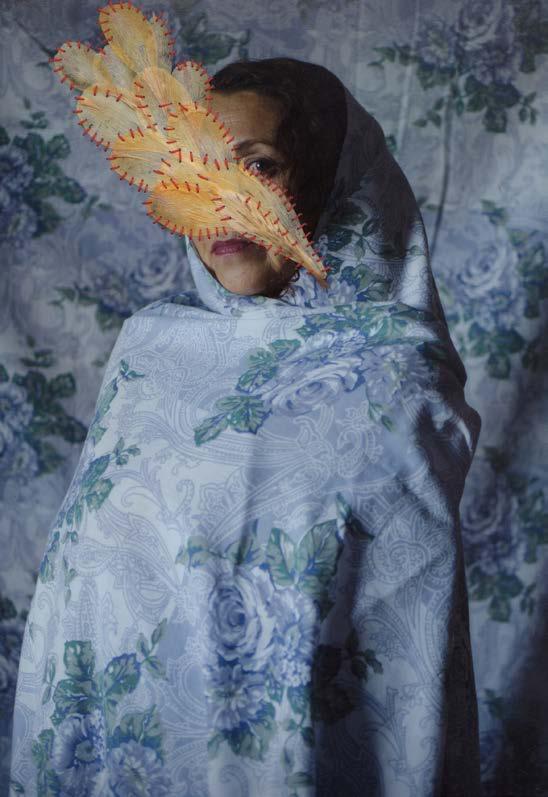
hace poco un amigo, hombre heterocis, me comentaba que ahora le da miedo tener citas y relaciones sexuales porque puede ser denunciado posteriormente. Respondí de forma inmediata que las mujeres estamos acostumbradas a vivir con miedo. Me miró y sonrió comprendiendo que el miedo pareciera ser parte de la sociedad actual, donde hemos normalizado la violencia independiente del género, a tal punto que preferimos vivir con desconfianza y temor, exagerando los cuidados para evitar dolores profundos. Aún así, la violencia y el abuso existen.
Carolina Agüero siempre ha trabajado sobre el género femenino y el abuso. En su obra, 74 nudos, por ejemplo, cuenta historias y testimonios reales de mujeres que fueron abusadas y violentadas en el espacio doméstico, sufriendo de “violencia silenciosa” de manera permanente, normalizando las agresiones y el sufrimiento. El bordado en sus fotografías entra de manera directa, cada puntada invita a visibilizar el dolor en todas sus formas, “la acción de repetir cada palabra es casi una representación de castigo que nos han inculcado, (desde colegio, si nos portábamos mal, nos hacían repetir 100 veces la misma palabra) Romper y atravesar la aguja en el papel es casi un acto performático; el enhebrar la aguja con el hilo rojo, atravesar el papel, rasgarlo, dejar esos nudos al aire y que se note la imperfección, es el acto de casi dejar al desnudo nuestra verdad”, explica la artista.
Para esta serie de trabajos, Carolina realizó un trabajo directo con las retratadas, quienes compartieron sus historias. Todas atravesadas por el silencio y el dolor de haber sido abusadas por sus padres o familiares; maltratadas por sus parejas; acosadas en el espacio público y privado. ¿Qué pasa cuando la violencia se normaliza a tal punto que es imposible desprenderse?
Y todo a través del cuerpo
Así como el dolor, el cuerpo es la esencia del trabajo de Carolina Agüero, quien a través de la fotografía intervenida logra expresar y narrar diversas historias permeadas siempre por la violencia, ya sea de género, ya sea histórica. “Me gusta observar el cuerpo humano, indiferente de su género. Saber qué pasa dentro de su propia representación como ser. Me pregunto ¿cuáles serán sus cicatrices más ocultas?, ¿cuales son sus dolores más profundos?, ¿cómo se siente al liberar sus emociones? En base a estas pequeñas observaciones y cuestionamientos, he llegado y dirigido la mirada al cuerpo porque es la mejor representación de nuestra existencia”.
Así, en 2013 comenzó trabajando Metamorfosis: 100 cuerpos de mujeres, donde reúne a mujeres de diferentes edades y retrata parte de sus cuerpos, creando un espacio íntimo, casi clínico y minimalista. A cada una de ellas les pidió que escribieran en un cuaderno lo que sentían: “¿por qué se desnudaban?, ¿cómo se sentían después de la sesión? Ya que en algunos casos se mostraban sus cicatrices en partes íntimas, lo
recently, a hetero-cis male friend told me he is scared of dating and sex because he can be reported after. I immediate answered that women are used to living with fear. He looked at me and smiled, understanding that fear seems to be a part of our society nowadays, and we have normalized violence, regardless of gender, to the extent that we would rather live with distrust and fear, and be overly cautious to avoid deep pain. And yet, violence and abuse still exist.
Carolina Agüero has always addressed the female genre and abuse. In her piece 74 nudos (74 knots), for instance, she narrates the stories and real testimonies of women who were abused in the domestic sphere suffering a constant “silent violence” where aggressions and suffering became the norm. The entrance of embroidery in her photographs is direct. Each stitch is an invitation for pain in all its forms to become visible: “repeating each word is almost the representation of a punishment we have been given (at school, if we misbehaved, we were made to repeat the same word 100 times). Severing and piercing paper with a needle is almost a performance act; threading the needle with a red thread, piercing the paper, tearing it, and leaving these knots visible so imperfections can show, is almost like barning our truth,” the artist explains.
For this series, Carolina worked directly with the portrayed women who shared their stories. They all experienced the silence and pain of being abused by their parents or relatives, mistreated by their partners, harassed in public or private spaces. What happens when violence is normalized to the point that it is impossible to become detached?
Everything through the body
Just like with pain, the body is the essence of Carolina Agüero’s work. Through intervened photographs, she manages to express and narrate different stories imbued with violence, whether gender-based or historical. “I like looking at the human body, regardless of gender, knowing what happens within its representation as a being. I wonder, what are its most hidden scars? What are its deepest pains? How does it feel when freeing its emotions? Based on those small observations and questions, I have turned my attention to the body because it’s the best representation of our existence.”
That is how, in 2013, she started working on Metamorfosis: 100 cuerpos de mujeres (Metamorphosis: 100 female bodies), which gathers women of different ages and captures part of their bodies, creating an intimate, almost clinical and minimalist space. She asked each of them to write what they felt in a notebook: “Why did they get naked? How did they feel after the session? This because, in some cases, the women showed
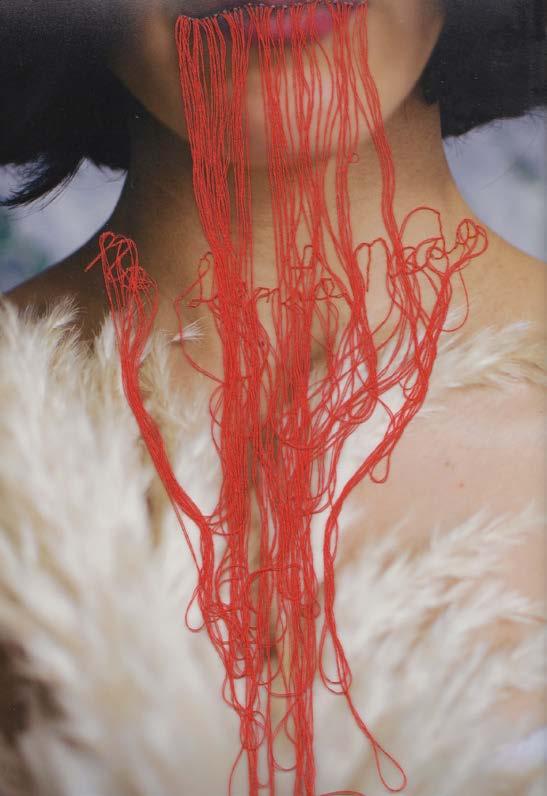


que era un tabú en ese momento. Les daba pudor exponerse, pero el acto de posar las hacía sentir vivas. Comencé a reflexionar que existe un gran porcentaje de mujeres dañadas, con heridas guardadas que sufrían violencia constante”, y este trabajo la llevó a profundizar en las historias más allá de la fotografía, para impregnar la imagen de una narrativa que sea capaz de reflejar la sórdida realidad de cualquier persona, porque sí, cualquier persona puede ser víctima de abuso o haberlo sido.
Y quiso dirigir este nuevo proceso a algo más sutil. Más privado. Las historias eran muy fuertes, por lo que empezó a tomar registro de detalles, o desenfocar la toma. Las retratadas comenzaron a pedirle ir a su casa, a sus espacios más íntimos. Para darle continuidad a la serie, mantuvo la escenografía: una sábana planchada con rosas grandes, casi perfectas, con un color frío que “te hace sentir en armonía y en cuidado”. Además, ocupó luz natural de mañana o de atardecer, “para generar esa atmósfera ficcionando la propia realidad, hermoseando lo que ya estaba dañado. Todo se dio muy orgánico”.
La infancia en el centro de la problemática
Luego de 5 años, llegó a Carolina una solicitud: hacer una sesión especial de fotos a una niña de 12 años, al aire libre, junto al mar. Había sido abusada por su tío. Pensaron que una sesión fotográfica podía ayudarla a liberar ese dolor. El dolor más fuerte que ha retratado Carolina. “No trabajo con niñeces, con menores de edad. En toda la sesión ella fue acompañada por su madre. Pero ese mismo año llegó una ola de violencia y femicidios en Chile y Latinoamérica. El tema sigue estando bastante fuerte y profundo”, explica.
A esto, se suma la triste historia de Noa Pothoven. Una niña de 11 años que fue abusada sexualmente. A los 14 años fue víctima de violación. El estrés postraumático, la depresión y los problemas alimenticios la acompañaron desde ese momento y no le permitieron vivir en paz nunca más. Solicitó la eutanasia, ya que vivía en Holanda, pero se la negaron por ser demasiado joven, con la intención de que el tratamiento psicológico haga efecto. Pero su decisión de morir estaba clara. Se negó a recibir alimentos y bebidas, hospitalizada en su propia casa, falleció con tratamiento paliativo. Sus padres la acompañaron. El dolor del abuso sexual y la violación puede ser así de grande.
“Su historia sacude hasta lo más profundo: habla de no querer vivir, de la imposibilidad de superar el trauma y el daño del abuso. Sus escritos son tan intensos y dolorosos que erizan la piel, invitando a una reflexión sobre ella y sobre las muchas mujeres que aún sufren en silencio”, señala Carolina y desde ahí surge la frase: “Por fin voy a ser liberada de mi sufrimiento porque es insoportable”, en honor a su muerte e historia; así como, “en realidad ya hace tiempo que no vivo, sobrevivo, e incluso eso casi no lo hago. Respiro, sí, pero ya no vivo”.
scars in intimate places, which was taboo at the time. They were embarrassed to expose themselves, but the act of posing made them feel alive. I started thinking that there is a large percentage of broken women, with scars hidden away, that suffered from violence constantly,” and his work led her to delve deeper into the stories, beyond photography, to imbue images of a narrative capable of reflecting the sordid reality of any person, because indeed anyone can be a victim or have been a victim of abuse.
She then sought to channel this new process towards something more subtle. More private. Stories were very heavy so she started recording the details, blurring shots. The women portrayed started asking her to come to their houses, their most intimate spaces. To give the series continuity, she kept the staging the same: an iron bed sheet with big roses, almost perfect, with a cool color that “makes you feel in harmony and cared for.” She also used natural light in the morning or at dusk “to create an atmosphere of make reality fiction, to make what’s broken beautiful. Everything happened very organically.”
Childhood as the center of the issue
After 5 years, Carolina received a request: to make a special session outdoors next to the sea for a 12-year-old girl. She had been abused by her uncle. They thought that the photo session might help her feel free of that pain. That was the most acute pain Carolina has portrayed. “I don’t work with children, with minors. She was with her mother during the entire session. But that was the year a wave of violence a femicides came to Chile and Latin America. The issue is still quite heavy and deep,” she explains.
The sad story of Noa Pothoven came to add to this. She was an 11-year-old girl that was sexually assaulted. At 14 years old, she was raped. Post-traumatic stress, depression and eating disorders followed from there and never let her live at peace. She requested to be euthanized, as she lived in the Netherlands, but she was denied for being too young, in the hopes that the psychotherapy might work. However, her decision to die had been made. She refused food and drink, was hospitalized in her own house, and died in palliative care. Her parents were with her. The pain from sexual abuse and rape and be than great.
“Her story shakes you to the core, the not wanting to live, not being able to move on from trauma and the damage of abuse, her story and her writing are son profound and painful it makes your hair stand on end. In these lie a reflection of her and many more women that suffer in silence,” Carolina states. Noa’s words come to mind: “I will be released because my suffering is unbearable,” honoring her death and her story. “I have not really been alive for so long, I survive, and not even that. I breathe but no longer live.”
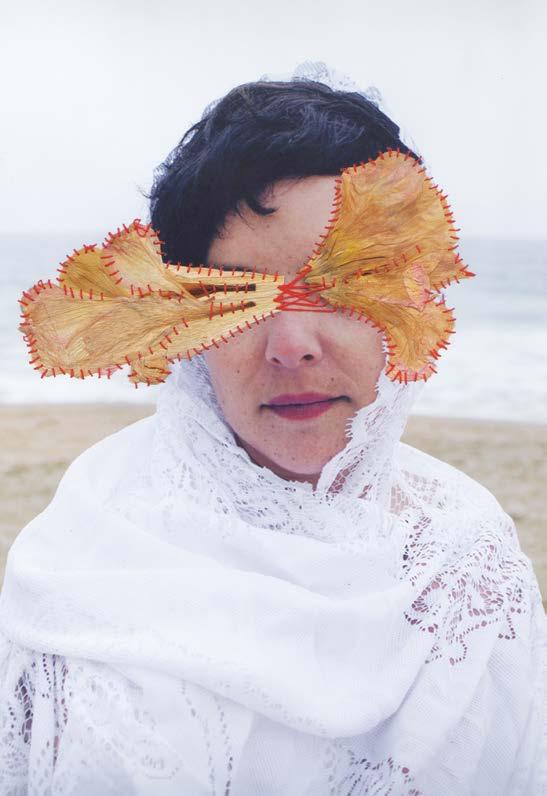

Por Anubis Burgos. Periodista (Chile)
Imágenes cortesía del artista y de Sergi Battle. España
Representado por Pigment Gallery.
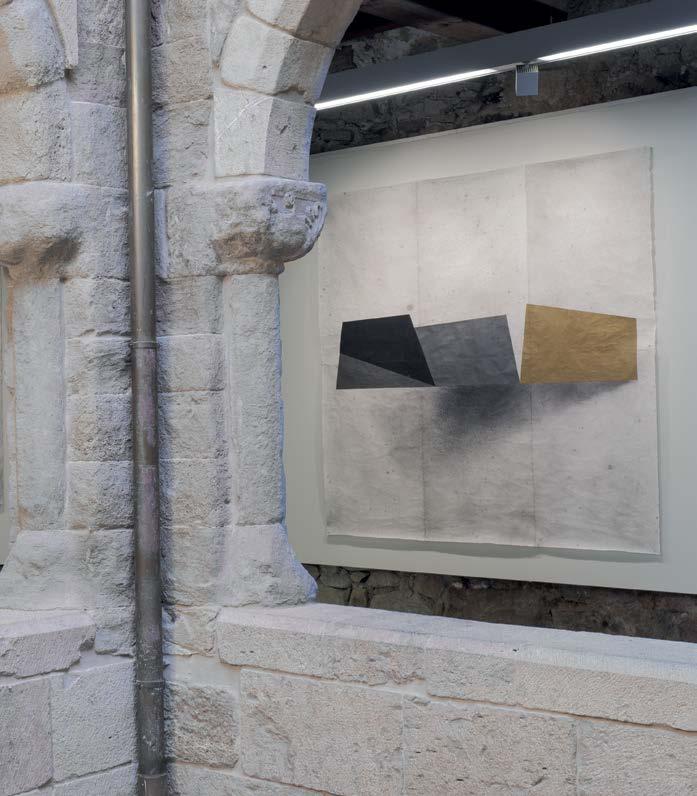
nuestra infancia nos define. Antes de la adolescencia, niñas y niños son increíbles artistas, pero un día escuchan que el arte “no sirve para nada” y, de paso, que “lo hacen mal”. La gran mayoría se frustra y nunca más vuelve a ese preciado regalo de la libertad imaginativa. La sociedad les arrebata abruptamente la posibilidad de ser creadores. Al menos, eso piensa Jordi.
Su proceso creativo se basa en la observación y escucha activa de lo cotidiano y en las formas que se encuentran tanto en yacimientos arqueológicos, como en nuestra tecnología de punta. Estas formas inspiran sus cuadros al óleo, los cuales son un homenaje al enorme legado de la pintura del pasado.
Para Jordi estas pinturas desafían el tiempo. Las formas que utiliza son herramientas que se encuentran a lo largo de las civilizaciones, desde lo sagrado a lo tecnológico y que nos han permitido evolucionar hasta nuestros días. Hoy son parte de un patrimonio colectivo (aunque, asegura, hay quienes se creen dueños de estas formas arquetípicas) “Estamos donde estamos gracias al arte. Siempre insisto en la importancia de guardar silencio, para estar atentos y, sobre todo, compartir. Mi trabajo se nutre de la calma”.
Aunque las pinturas al óleo constituyen una parte intrínseca de Jordi, el papel oriental es otro de sus pilares al momento de plasmar una obra. Su fragilidad le permite presentar un elemento central en sus creaciones, donde las formas son envueltas en una atmósfera de ingravidez, como si el tiempo y el espacio se detuvieran y, al mismo tiempo, intentaran inundar el campo de visión de quien la contempla.
Hasta Nueva York llega la belleza de Girona
Para Jordi su ciudad natal era gris. “No era más que un puente para cruzar a Francia. Incluso Picasso se detuvo unos días antes de viajar a París por primera vez. Girona conversa con vestigios del imperio romano y la huella de una comunidad judía llena de cabalistas, los cuales plasmaron sus creencias por todo el barrio antiguo”.
A los 14 años, el pintor gironí Isidre Vicens lo acoge en su taller, transformando por completo su mundo pictórico y su manera de ver la vida. “Todo lo que aprendí sobre arte me lo enseñó él, era un humanista y un libre pensador con una pedagogía excepcional”, declara. Después de tres años se mudó a Barcelona, donde terminó sus estudios de Bellas Artes en la Facultad de Sant Jordi.
our childhood defines us. Prior to adolescence, children are incredible artists, but one day they hear that art “is good for nothing” and, besides, that “they are doing it wrong”. Most get frustrated and never return to the precious gift of creative freedom; society abruptly robs them of the possibility of becoming creators. At least that’s what Jordi thinks.
His creative process is based on observation and active listening of dayto-day aspects and shapes he finds in both archaeological sites and in our state-of-the-art technology. These shapes inspire his oil paintings, which pay tribute to a legacy of the great painting of the past.
For Jordi, these paintings challenge time. The shapes he uses are tools found across different civilizations, from sacred to technological tools that have allowed us to evolve to the present day. Today, these are part of a collective heritage, although, he assures, there are some who believe they own these archetypes: “We are where we are thanks to art. I always stress the importance of being silent, being mindful and, above all else, sharing. My work is nurtured by calmness.”
While oil paintings constitute an inherent part of Jordi’s work, Japanese paper is another of his pillars while creating artwork. The frailty of this material allows him to present a central element in his creations, where shapes are surrounded by an atmosphere of weightlessness, as if time and space were standing still and, at the same time, trying to overflow viewers’ field of vision.
The beauty of Girona reaches New York
For Jordi, his native city was gray. “It was merely a bridge away from France. Even Picasso stopped a few days before traveling to Paris for the first time. Girona has remains of the Roman Empire and the traces of a Jewish community full of Kabbalists, who spread their beliefs all over the old quarter.”
At 14 years of age, the Gironí painter Isidre Vicens welcomed him to his studio, completely transforming his visual world and his way of viewing life. “He taught me everything I learned about art. He was a humanist and free-thinker with an exceptional pedagogy,” he states. Three years later, he moved to Barcelona, where he finished his fine arts studies at the Sant Jordi Academy.

Pures Ombres , 2023, gouache y tinta china sobre papel japonés, 155 x 145 cm.

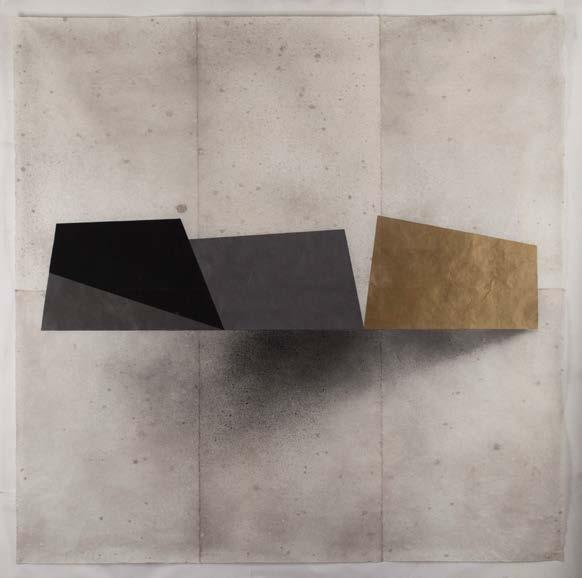
Hace prácticamente 10 años atrás, en el otoño del año 2015, realiza una estancia en New York. Aquella experiencia transforma su trabajo. Conoce de primera mano las obras de artistas como Sol Lewitt, Fred Sandback, Agnes Martin y Ellsworth Kelly. Con esa vivencia entendió por qué el arte es necesario en nuestra sociedad. Según dice el propio artista “es la clave para poder expresar las emociones, el conocimiento, e iluminar los caminos que nos permitan avanzar.
Insumiso
Con vehemencia, dice que le gustaría compartir un dato. “A los 18 años planté cara al Estado español negándome a realizar el servicio militar, me declaré insurrecto por razones éticas y puramente humanitarias”. Esta cruzada, menciona, le otorgo ese primer impulso hacia un abismo imaginario: el vértigo de la caída libre. Recuerda el año 1985 como “uno de esos grandes acantilados de Caspar Friedrich”.
Aún no había cumplido los 9 años cuando el renacimiento italiano lo abdujo por completo, seguramente por el hecho de sus idas y venidas a la tierra natal de su madre, muy cerca de Nápoles y por ser heredero de una familia de artistas, que por desgracia nunca conoció. Pero el mundo se compone de arte y, en sus momentos más solitarios y sombríos, lo acompañó el impresionismo francés, la pintura catalana y artistas como Miró, Picasso, Tàpies, e incluso los norteamericanos Pollock y Rothko. “La principal influencia de mi adolescencia, sin lugar a dudas fue Tápies. Cómo no. En aquella época era omnipresente y su sombra muy alargada. Sin duda un pintor repleto de simbología y belleza, aunque él se empecinó a crear un arte basado en lo antiestético”.
Observar una obra Martoranno
A Jordi le interesan dos cosas. La primera, es que el proceso de creación transforme su conciencia y su actitud. La segunda, es más difícil. Busca que su arte envuelva la experiencia y mirada del espectador, mientras él mismo se reconoce en las obras. Quiere que ese sentimiento se vuelva atemporal, precisamente por el contenido arquetípico y, a veces, simbólico de las exposiciones.
Su carrera es extensa. Los reconocimientos le llegan desde todas partes, pero compara sus intenciones con un espejo, en el que cualquier persona puede mirar su reflejo y percatarse de la gravedad, en tanto la Tierra sigue girando como las manillas del reloj. Entonces se quedan ahí, estáticos. El color gris de fondo le recuerda sus días más solitarios, pero la Tierra sigue girando. Y mirando el punto focal, vuelven a esa época de su vida: todo gris.
Almost 10 years ago, in the fall of 2015, he was an artist-in-residence in New York, an experience that transformed his work. He got to see the work of artists such as Sol Lewitt, Fred Sandback, Agnes Martin, and Ellsorth Kelly in the flesh. Through that experience, he learned why art is necessary for our society. As the artist said: “it is the key for expressing emotions, knowledge, and shed light on the paths that allow us to move forward.
He vehemently states he would like to share a story. “When I was 18 years old, I defied the Spanish government by refusing to do military service. I declared myself an objector for purely ethical and humanitarian reasons.” This crusade, he mentions, gave him a first push towards an imaginary abyss: the vertigo of free falling. He recalls 1985 as “one of Caspar Friedrich’s great cliffs.”
He was not yet 9 years old when Italian Renaissance fully absorbed him, probably due to his comings and goings to his mother’s homeland, near Naples, and for being the heir of a family of artists, whom he unfortunately never knew. But the world is made up of art and, in his loneliest and gloomiest moments, he was surrounded by French impressionism, Catalan painting and artists such as Miró, Picasso, Tàpies, and even the Americans Pollock and Rothko. “My main influence during my teenage years was definitely Tàpies. How couldn’t he be? At the time he was omnipresent and he casted a large shadow. He was undoubtedly a painter full of symbolism and beauty, although he was determined to create an art based on the unaesthetic.”
Examining artwork by Martoranno
Jordi is interested in two things. The first, he wants his creative process to transform his own awareness and attitude. The second is harder. He aims for his paintings to surround viewers’ gaze and experience, as they recognize themselves in them. He wants that feeling to become timeless, especially due to the archetypal and sometimes symbolic content of his artwork.
His career has been long. Acknowledgments come from everywhere, but he compares his intentions with a mirror: any person can see their reflection and notice the seriousness, as the world keeps spinning around like clock handles. And there they stand still. The gray from the background reminds them of their loneliest days, but the world keeps spinning. Once they find the center point, they go back to that time in their lives where everything was gray.

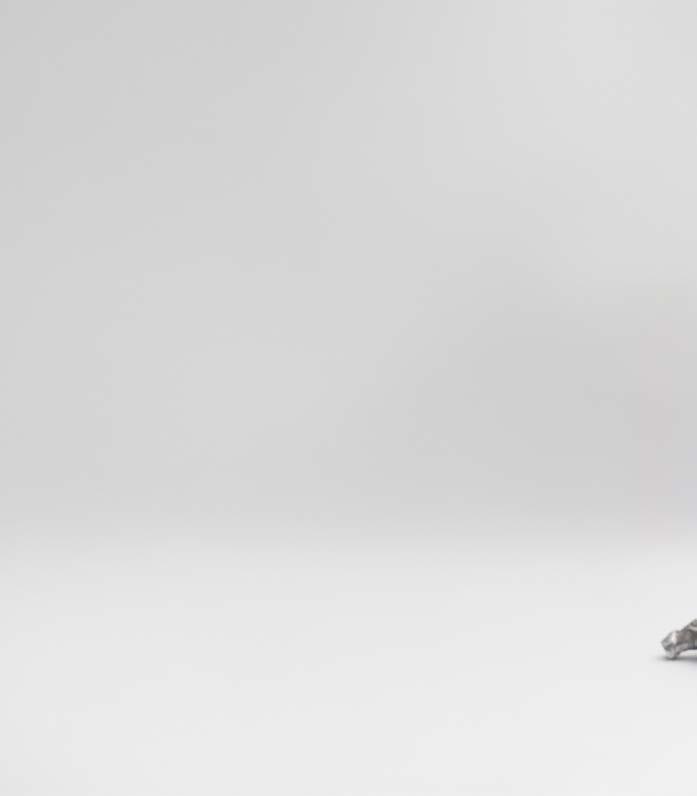
Por Lucía Rey. Académica e investigadora independiente (Chile) Imágenes cortesía del artista. Representado por Building Bridges Art Exchange.
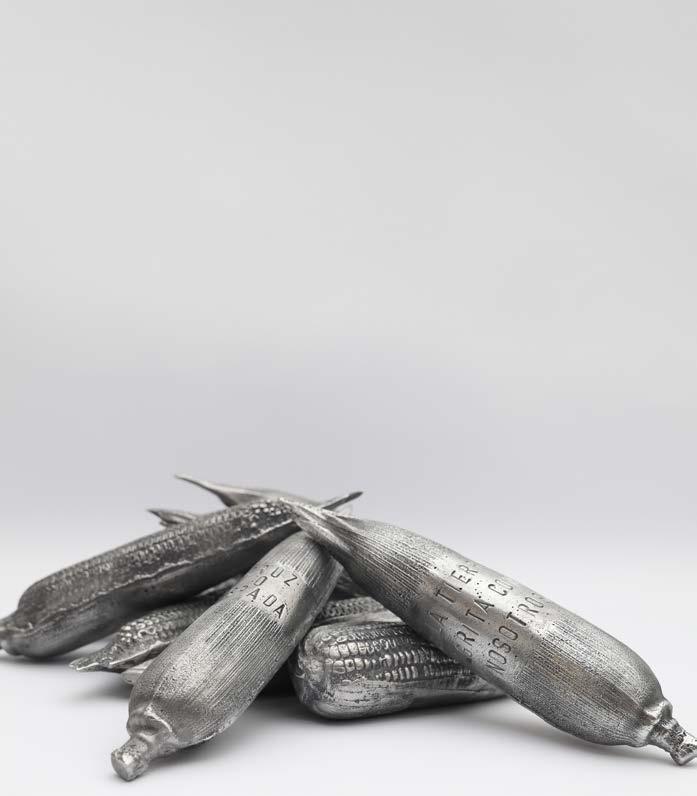

De
l as obras aquí presentes hacen parte de la exposición From Origins to Horizons, expuesta en el Museo de Arte de las Américas (AMA) en Washington D.C. En ella, el artista salvadoreño plantea visualmente la pregunta por la noción de origen y horizonte en América, atravesado por la memoria latente del largo proceso de aculturación en Indoamérica llevado a cabo en la colonización. El artista elabora, simbólicamente, las heridas abiertas de Abya Yala, a través de recursos plásticos que remiten a huellas y coordenadas de memorias eclipsadas por la sombra de la modernidad.
Estas obras están en el espectro estético de la dialéctica negativa (Th. Adorno), donde se encuentran, en la misma imagen, la figuración de las herramientas de Occidente a partir del extractivismo de la savia de los pueblos originarios. En este sentido, las obras pictóricas de la muestra están hiladas por la persistencia de las hojas de oro sobre pigmentos naturales (como el añil o índigo, encajes, tierras, arenas, hoja de banano, maíz o de maguey), contrastando el valor de la sacralidad colonial y el oro con el sentido profundo de lo sagrado para los pueblos originarios, encontrado en la madre tierra. Esta dialéctica busca poner en contraste y también reflejar al espectador el cómo esta penetración ha ido constituyendo, culturalmente, los valores del mundo occidentalizado.
the pieces featured here are part of the exhibition From Origins to Horizons, shown at the Art Museum of the Americas (AMA) in Washington DC. In it, the Salvadorian artist questions, through visuals, the notion of the origin and horizons of America, exploring the latent memory of the lengthy process of acculturation of indigenous peoples throughout colonization. The artist symbolically crafts the open wounds of Abya Yala through visual resources that refer to the traces and coordinates of memories eclipsed by the shadows of modernity.
These pieces fall under the aesthetic spectrum of negative dialectics (Th. Adorno) and they simultaneously feature depictions of Western tools used for the exploitation of the essence of native peoples. In this sense, the artworks in the sample are linked by the recurrence of golden leaves on natural pigments (such as indigo, lace, soil, sand, banana, maize or agave leaves), contrasting the value of the sanctity of colonial times and gold with the profound importance of the sanctity of mother earth for native peoples. This dialectic seeks to highlight and convey to viewers how the advance of colonization has culturally built the values of the Western world.
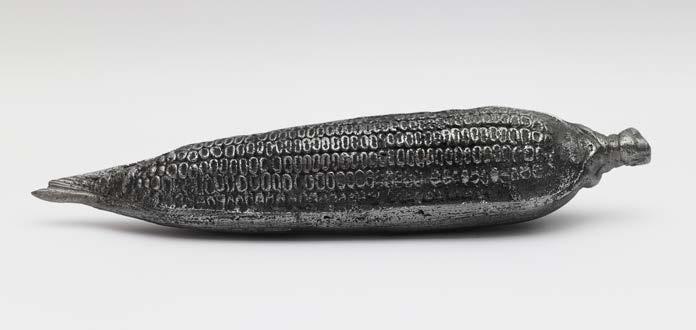
Los colores con los que trabaja están en la gama de grises, rojos, blanco y dorados. Los grises de las telas interactúan con el gris del aluminio (reciclado) de los objetos escultóricos que cohabitan dentro de la misma exposición. Es un gris que nos lleva a pensar en el cemento y en el plomo de las balas, que son figuradas como forma de maíz. Este juego figurativo, entre bala y maíz, nos transporta a la reflexión sobre el extractivismo, el ecocidio y el genocidio colonial, en donde la bala cobra más significado que el alimento y la propia vida, recordando el maíz como figuración de lo sagrado para los pueblos precolombinos, que se confunde con la figura de la bala; siendo el maíz símbolo de vida, se transfigura estéticamente con la necropolítica de un mundo gris.
De ahí emerge el color púrpura, un tipo de rojo, que indica el significado católico sacro de fidelidad a la Iglesia hasta la muerte y también de la “pasión de Cristo”. Lo encontramos acá señalando la sangre derramada de generaciones de indoamericanos que han defendido las tradiciones que protegen la Pachamama. Asívemos, por ejemplo, en la obra “Pentêkostê hêméra” una flor de lis
His chosen colors include hues of gray, red, white and gold. The grays in the textiles interact with the gray of recycled aluminum of the sculptures that cohabit within the same exhibition. These grays remind us of cement and lead in bullets, which are depicted in the shape of maize. This figurative interplay between maize and bullet leads us to reflect on colonial exploitation, ecocide, and genocide. Bullets thus become more important than this grain or even life itself, as maize, a symbol of sanctity and life for pre-Hispanic peoples, is mistaken for bullets and it is aesthetically transfigured with the necropolitics of a gray world.
Then, a purple hue –a type of red– emerges to allude to the sanctity of Catholicism and undying loyalty to the Church, as well as the “Passion of the Christ” in the spilled blood of generations of native peoples that have defended the traditions to protect Pachamama. An example of this can be found in the piece “Pentêkostê hêméra” depicting an inverted fleur-de-lis

(antiguo símbolo de iluminación) invertida con un fondo gris (aunque no fue pintada intencionalmente). El día de pentecostés en los escritos bíblicos, habla de la recepción del fuego unificador del “Espíritu Santo”, que acá, sin embargo, parece indicar más que al cielo al inframundo de la minería, causante de tanta devastación en América Latina. Las obras pictóricas de esta muestra enfocan desde la abstracción cartografías de territorios colonizados como un recurso simbólico que el artista retoma en diversas obras en su trayectoria.
La mímesis simbólica de las obras escultóricas hacen tener un impulso de confundir estas balas con alimento, que con sus títulos inscriptos en el aluminio configuran su dirección hacia el interior del espectador, como balas de inyección de memoria que traen al corazón el dolor colonial junto a la desacralización de la tierra y de la vida, para recibir a cambio una cruz que penetra nuestra cultura como una espada de hierro. Esta espada completa la constelación mnémica de las heridas abiertas y se hace presente como objeto escultórico que no permite diferenciar si es espada o cruz.
(symbol of enlightenment) on a gray backdrop, although the symbol was not painted intentionally. According to biblical texts, Pentecost is about the coming of uniting fire of the Holy Spirit. In the piece, however, it does not seem to refer to the skies, but rather the underworld of mining, the cause of so much devastation in Latin America. The paintings in the sample are centered around abstract cartographies of colonized territories, a symbolic resource that the artist repeats throughout several pieces in his oeuvre.
The symbolic mimesis in the sculptures tend to make us mistake bullets and foods, and their aluminum engraved titles are directed towards viewers as memory injection bullets that carry the pains of colonization and the desanctification of the earth and life to, in turn, welcome a cross that pierces our culture like an iron sword. This sword completes the symbolic constellation of open wounds and takes on the form of a sculpture that makes it hard to distinguish sword from cross.

De la serie Maiz, “Hijos del sol no del hierro”, 2024, aluminio
El proceso colonial realizado a través de la producción artística del llamado barroco mestizo cumplió un importante rol a la hora penetrar en los contenidos espirituales que, de alguna manera, persistían (y persisten) entre las hebras del catolicismo. Los nombres en latín de las obras pictóricas abstractas cumplen el rol de recordarnos esa penetración de lo completamente ajeno, puesto que el artista invierte la operación barroca que se enfocaba en representar vívidamente las narraciones “evangelistas”.
Estas obras yerguen desde una reflexión crítica de la historia del territorio americano, partiendo desde la violenta invasión colonial española con el proceso de “evangelización” cristiana, grabando la cruz de hierro ardiendo en las pieles como sistemática humillación e inferiorización de las cosmovisiones presentes. Así, el artista se ubica desde un presente en disputa, desde donde aporta a la reflexión y la conciencia sobre los cambios actuales que se están produciendo en el planeta y la importancia de la preservación y re-existencia de las sabidurías de los pueblos originarios.
The colonial process enacted by artistic creation during the socalled Andean Baroque played an important role in the irruption of the spiritual contents that have somehow pervaded (and still pervade) among the threads of Catholicism. The Latin names of these abstract visual artworks serve the purpose of reminding us of that irruption of a completely foreign culture, given that the artist inverts the Baroque trend of vivid representations of “evangelizing” narratives.
In brief, these pieces stem from a critical reflection on the history of the American territory, starting from the violent Spanish invasion and colonization, followed by Christian evangelism, branding our tissues with a burning iron cross in a systematic process of humiliation and undermining of our worldviews. Thus, the artist stands in a present under dispute and he contributes a reflection and awareness of current ongoing changes around the world and the importance of preserving and salvaging the wisdom of native peoples.
Por Denisse Leighton. Periodista (Chile) Imágenes cortesía del artista. Representado por GALLERyLABS.

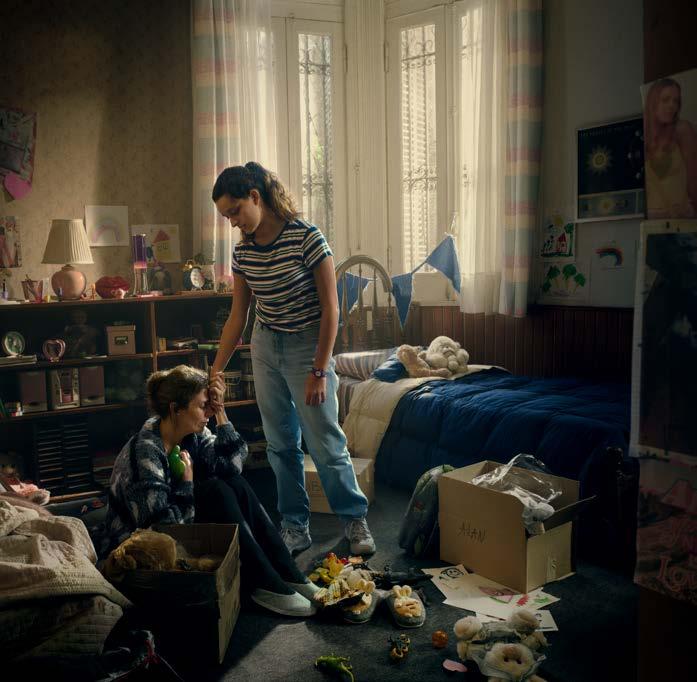
cesar Guardia Alemañi nos invita a detenernos y observar en su serie Hacia la Intimidad, donde las fotografías exploran pequeños momentos de la vida de personajes ficticios, inspirados en procesos de vida que ocurren en sus espacios personales.
El artista enfrenta al espectador a diversas imágenes que causan un efecto ineludible posicionándolo como observador y a la vez como protagonista, desde un prisma más íntimo, ya que las historias que representan cada imagen podrían ser una realidad en la vida de quien las aprecia.
Las fotografías en gran formato completan una serie de 8 escenas creadas bajo un lenguaje profundamente cinematográfico, ya que Cesar ha sido influenciado por el cine desde muy joven, siendo esta una de sus principales pasiones. “En este proyecto quería hacer algo más planificado, con bocetos”, explica el artista. Así, se enfrentó a este nuevo proyecto con historias que eran para hacer un verdadero cortometraje o historias en movimiento. El desafío quedó claro: “pensar en sintetizar la idea de contar una historia con distintos personajes en una sola foto, y cómo todas estas imágenes, con personajes, elementos e incluso épocas diferentes, pueden amalgamarse en una serie”, comenta Guardia Alemañi.
Al observar las fotografías, salta a la vista el tratamiento con un dramático juego de claroscuros y cierto atisbo de tenebrismo que inevitablemente nos recuerda la obra de Caravaggio o Velázquez, ambos prominentes figuras de la historia del arte o de los fotógrafos Erwin Olaf o Eugenio Recuenco. Las imágenes logran cautivar en cada detalle perceptible. La atmósfera, los objetos, la posición y actitud de sus personajes hablan entre líneas desvelando historias personales y privadas que parecieran estar a la espera de ser interpretadas.
césar Guardia Alemañi encourages us to stop and contemplate in his new series Hacia la Intimidad (Towards Intimacy), where photographs explore the small life experiences of fictional characters inspired in processes that happened in his personal life.
The artist confronts viewers with different images that have an inescapable effect, making the audience both observer and protagonist. To do so, he uses an intimate approach, as the stories represented in all images could be a reality in any of the viewers’ lives.
Large-scale photographs make up a series of 8 scenes created with a profoundly cinematic language, since César has been influenced by film from a young age and it is one of his main passions. “In this project, I wanted to do something more planned out with sketches,” the artist explains. Thus, he took on this new project with stories that might have created a short film or moving stories. The challenge was clear: “Think about synthesizing the narrative notion of storytelling with different characters in a single photograph, and about how those photos with different characters, elements and even eras can be merged in a series,” Guardia Alemañi comments.
When looking at the photographs, the dramatic chiaroscuro treatment stands out with a hint of gloominess that inevitably reminds us of the works of Caravaggio or Velázquez, both prominent figures of art history, or photographers Erwin Olaf or Eugenio Recuenco. The images manage to captivate with all its perceivable details, the atmosphere, the objects, the position and attitudes of the characters that speak between the lines, revealing personal and private stories seemingly awaiting to be interpreted.


Sobre el proceso de creación el autor comenta: “Primero viene la idea, una estructura de algo que es más largo, la temporalidad es importante. Ademas de las fotos, están los planos cerrados en blanco y negro que te muestran otros momentos del personaje, antes y/o después. Esto te acerca a un formato más cinematográfico. Es ideal que puedas tomarte el tiempo de recorrer las obras”, ya que el proceso de creación es bastante complejo. Al respecto señala: “Pienso mucho en toda la historia, hago un sinóptico, de dónde vienen los personajes, qué edades tienen, qué les pasó para llegar a ese momento”.
Este último es uno de los puntos claves de la obra de Guardia Alemañi: el poder de la historia, el poder de las experiencias humanas, el poder de pensar y sentir la vida. El estar conectados consigo mismos y reflexionar de forma consciente sobre los caminos que se quieren seguir en este ineludible paso por la Tierra, parece ser una realidad que no todos están dispuestos a observar. Al parecer, en los tiempos que corren, producto de la tecnología, la hiperconectividad y la sobre información, no es tan fácil mantener la atención en los temas íntimos de la existencia. El artista oscurece las sombras de las realidades que relata y a la vez ilumina con haces de luz lo fundamental, lo primordial que nos revela la vida misma.
Sobre esta mirada existencialista retrata cómo lo cautivan aquellos momentos vitales y culmines en las historias de cada personaje, como si de una película se tratara. Aquella escena de un film en la que se revelan los misterios de su trama. “En principio el relato tiene que atravesar la naturaleza humana. Momentos importantes en la vida de las personas, eso es lo que traspasa un poco mi obra en general.
In regards to his creative process, the author comments: “First comes the idea, a structure of something that is longer; timing is important. Additionally to the photos, there are black and white close-ups that show other moments of the characters, either before or after, and this brings the pieces to a format that resembles cinema. Ideally, you would take your time to contemplate the pieces,” because the creative process is quite complex, about which he states: “I think about the whole story and I summarize it: where the characters come from, how old they are, what happened to get to that moment.”
The latter is one of the key aspects of Guardia Alemañi’s work, the power of stories, human experiences, thinking and feeling life. Being connected with oneself and consciously reflecting on the paths to follow in our inescapable passage through the earth seems a reality not everyone is willing to observe. It seems that in these times of technology, hyper-connectivity and information overload, it is not so easy to focus on the intimate issues of existence. The artist darkens the shadows of the realities he portrays and sheds beams of light on the fundamentals, the essence that reveals life itself to us.
Through this existential perspective, he depicts how captivating he finds those vital moments and highlights in the character’s stories, just like if they were films, and namely movie scenes that reveal the mysteries of the plot. “In principle, stories have to delve into human nature, important moments in people’s lives, that is what my work generally addresses.
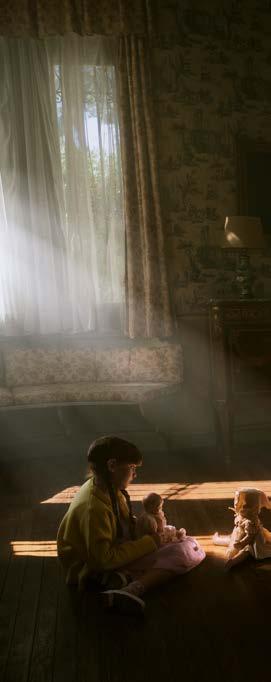

Para la construcción de los sets, el fotógrafo contó con el trabajo de Mónica F. Carvajal, codirectora creativa y directora de arte, quien se encargó de reflejar el mundo que veía César en su imaginario a través de la decoración y objetos que se encuentran dentro de la imagen. Sin duda, fue un trabajo arduo, ya que al hacer fotos tan diversas e historias tan distintas entre sí, querían que cada una tuviera una narrativa particular. Además, realizaron una tarea de investigación de época, porque en cada foto se observan contextos temporales distintos, desde los años ‘70 hasta la actualidad. Cada paleta de color es distinta en cada foto.
El autor en un principio es un asiduo espectador, y a la vez, como artista, plantea su punto de vista guiando a los actores protagonistas de sus fotografías para interpretar el mensaje trascendente incluso a su propia obra. La narrativa se hace esencial, el desenlace de la historia lo completa cada persona que se detiene frente a sus obras y lo íntimo aparece en diversos aspectos. Los personajes casi siempre están en introspección, observando algo, detenidos; así como para los espectadores, quienes se involucran directamente gracias a la intimidad que Guardia Alemañi nos propone y que logra reflejar realidades que, de una u otra forma, todos hemos experimentado.
Hacia la Intimidad hace un llamado a despertar ante una rutina asfixiante y entender que hay ciertas cosas que vivimos que tienden a remover y hacer mover, tomar decisiones. “No te puedes quedar en un espacio de confort, tienes que agarrar y hacer algo con tu vida y cambiar. La vida es tomar todo lo malo que te pueda pasar y transformarlo en algo bueno. Quienes pueden hacer eso son las personas más fuertes”, enfatiza.
To build the sets, the photographer worked along creative co-director and art director, Mónica F. Carvajal, who was in charge of recreating the world
César saw in each character through the decoration and objects found within the image. Without a doubt, it was hard work, since the stories were so different from one another that they wanted each one to have a particular narrative. They also undertook some period research, as the photographs are set in different time periods, ranging from the 70s to the present. The color palette for each photo is also different.
At the beginning, the author is a regular viewer, and then as an artist he brings forward his point of view by guiding the leading actors in the pictures to interpret a message that transcend the piece itself. The narrative becomes essential, the ending of the story is completed by the people who stop before his pieces, as intimate aspects emerge. The characters are almost always introspective, looking at something, still, just like the viewers. The audience thus becomes directly engaged, since the intimacy that Guardia Alemañi proposes manages to reflect realities that we have all experienced in one way or another.
Hacia la Intimidad calls upon us to awaken from an asphyxiating routine and understand that some of the things we experience that inevitably move us and force us to make decisions. “You can’t stay in your comfort zone; you have to grab hold and do something with your life and change. Life is about taking everything bad that can happen to you and transforming it into something good. Those who can do that are the strongest people,” he emphasizes.

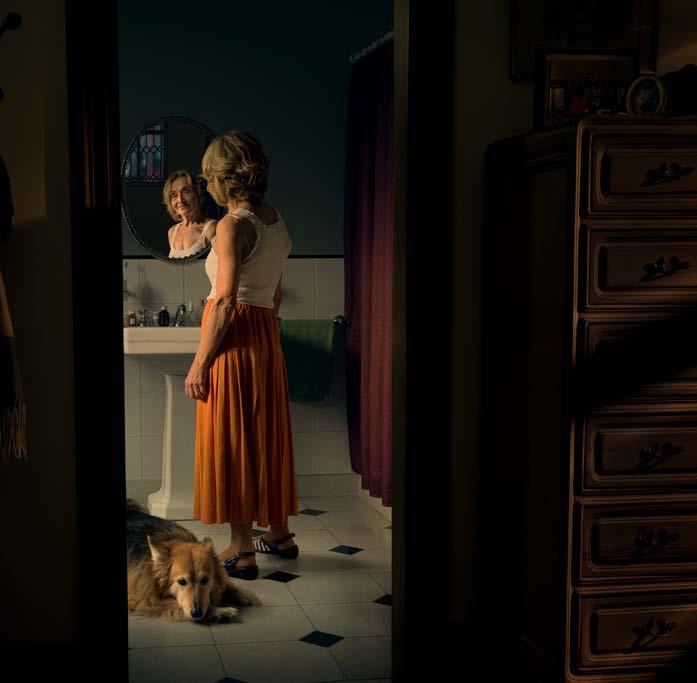
Por Julio Sapollnik. Crítico de arte (Argentina) Imágenes cortesía del artista.


l a obra de Emilio Fatuzzo se presenta como un encuentro de opuestos. Tiene la misma intensidad cuando aplica la fogosidad del color como cuando deja amplios espacios de silencio. El contemplador queda cautivo de una energía poetizada que atraviesa el cuadro, una energía que no solo se ve, sino que se siente, condición necesaria para permitir desentrañar las imágenes percibidas y para situarse en un diálogo entre lo visible y lo invisible. Se podría pensar que la singularidad de su lenguaje se caracteriza por pequeños toques de pincel, sutiles pero potentes, que recuerdan a la técnica haiku en poesía: cada pincelada es un gesto mínimo que encierra una vastedad de sentidos y que, en su aparente simplicidad, se abre a múltiples interpretaciones.
Como si cada trazo fuera una nota en un pentagrama, su obra propone ser observada desde el encanto de una expresión lírica. Este concepto sonoro no solo responde a la tradición de la exaltación de la naturaleza, sino que también se enlaza con las exploraciones contemporáneas del arte que buscan rescatar la espiritualidad y la conexión emocional en tiempos de tecnología y saturación visual. Así, el espectador no solo se encuentra ante una pintura, sino ante un espacio de meditación, sugiere una pausa, una contemplación, en un mundo que nos empuja a un continuo movimiento. La exaltación de la naturaleza en la obra de Fatuzzo eleva la sensibilidad en la vida cotidiana, crea un puente entre lo tangible y lo intangible. En su pintura podemos imaginar el agua, el viento, la luna y su noche, convertidos en simbología de una experiencia estética.
En esta línea, podríamos pensar también en poetas contemporáneos como Wislawa Szymborska, cuya obra explora las complejidades de la existencia humana a través de la simplicidad de la observación de la naturaleza. Fatuzzo, al igual que Szymborska, revela en su trabajo una atención minuciosa a lo efímero, capturando momentos y detalles que pasan desapercibidos para muchos, pero que son fundamentales para la experiencia humana.
emilio Fatuzzo’s work is presented as a meeting of opposites. It has the same intensity when he applies fiery colors and when he allows for vast spaces of silence. Viewers become captivated with a poetic energy that goes through the painting, an energy that cannot only be seen, but also felt, which is necessary to unravel the images and to enter into a dialog between the visible and the invisible. One might think that the uniqueness of his language stands out for the small touches of a brush, subtle yet powerful, reminiscent of haiku poetry: each brush stroke is a minimal gesture that encompasses a vastness of meaning and, in their apparent simplicity, they invite multiple interpretations.
As if each brush stroke were a note in a staff, his work should be examined from the charm of lyrical expression. This notion of sound does not only answer to the tradition of celebrating nature, but it is also linked to contemporary explorations of art that seek to preserve spirituality and emotional connection in times of technology and visual saturation. Thus, viewers do not just stand before a painting, but a space for meditation that offers a pause and a moment for contemplation in a world that pushes us to keep moving. The celebration of nature in Fatuzzo’s work elevates sensibility in daily life and creates a bridge between the tangible and intangible. In his paintings, we can imagine water, wind, the moon and night turned into symbols of an aesthetic experience.
In this sense, we could also recall contemporary poets such as Wislawa Szymborska, whose work explores the complexities of the human experience through the simplicity of nature observation. Just like Szymborska, Fatuzzo reveals a thorough attention of the fleeting, capturing moments and details that many overlook, but which are fundamental to the human experience.

La pintura de Fatuzzo deja rastros del paso del tiempo, de la soledad y de una búsqueda interior hacia la trascendencia. Aquí, resuenan las ideas de filósofos contemporáneos como Gaston Bachelard, quien argumentaba que la poética del espacio no solo reside en lo que se ve, sino en la experiencia del habitar y el recuerdo de lo vivido. El tiempo en la obra de Fatuzzo no es lineal, sino una textura que se desdobla en cada contemplación, una invitación a habitar los espacios internos del espectador.
Lacan afirmaba que, no es la mirada del contemplador la que se dirige a la obra de arte, sino que es la superficie de la obra de arte la que atrae la mirada del contemplador. En este sentido, la obra de Fatuzzo encarna esa atracción, donde la mirada no es un mero acto de ver, sino un encuentro con el deseo inconsciente que la obra despierta. La pintura no solo muestra, sino que sugiere, bordea lo visible con una carga emocional que nunca termina de revelarse por completo.
La obra de Emilio Fatuzzo puede entenderse como un intento de captar la esencia del mundo natural y su particularidad frente a la experiencia humana. Su enfoque recuerda a las tendencias contemporáneas que valoran lo efímero, como las obras de artistas que exploran el land art o el arte conceptual, donde el significado trasciende el objeto físico y se traslada al ámbito de la experiencia sensorial y espiritual.
En un tiempo marcado por la velocidad y el consumo de imágenes, la pintura de Fatuzzo actúa como un recordatorio sobre el modo de observar: un susurro que nos invita a redescubrir lo sublime en lo cotidiano, a detenernos y a buscar aquello que trasciende más allá de lo evidente. Es una invitación a participar en una comunión estética, donde lo cotidiano se transforma en una experiencia poética que revela la grandeza y la complejidad de la existencia humana.
Fatuzzo’s paintings leave traces of the passage of time, being alone, and the inner quest towards transcendence. This echoes the ideas of contemporary philosophers such as Gaston Bachelard, who argued that the poetry of space resides not only in what is seen, but in the experience of inhabiting and the memory of past experiences. In Fatuzzo’s work, time is not lineal but a texture that unfold upon each contemplation, an invitation for viewers to inhabit their inner spaces.
Lacan stated that the eye of the beholder did not move towards a work of art, but rather than the work of art draws the eye of the beholder. In this sense, Fatuzzo’s work embodies that attraction, in which eyes are not merely for seeing, but for meeting a subconscious desire that the artwork awakens. Paintings do not just show, they suggest, they envelop the visible with an emotional charge that never fully reveals itself.
Emilio Fatuzzo’s work can be seen as an attempt to capture the essence of the natural world and its uniqueness in relation to the human experience. His approach reminds us of contemporary trends that value the ephemeral, like in artwork by artists exploring land art or conceptual art, where meaning transcends physical objects and is transported to the realm of sensory and spiritual experiences.
In an era of haste and image consumption, Fatuzzo’s painting serves as a reminder to observe: a whisper that encourages us to rediscover the sublime in everyday life, to stop and look for that which transcends beyond what is evident. It is an invitation to participate in an aesthetic communion, where everyday elements are transformed into a poetic experience that reveals the grandeur and complexity of the human experience.
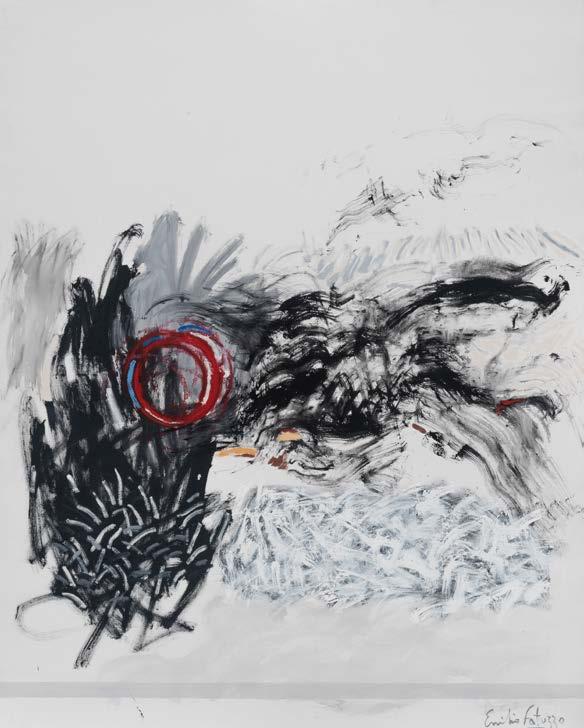
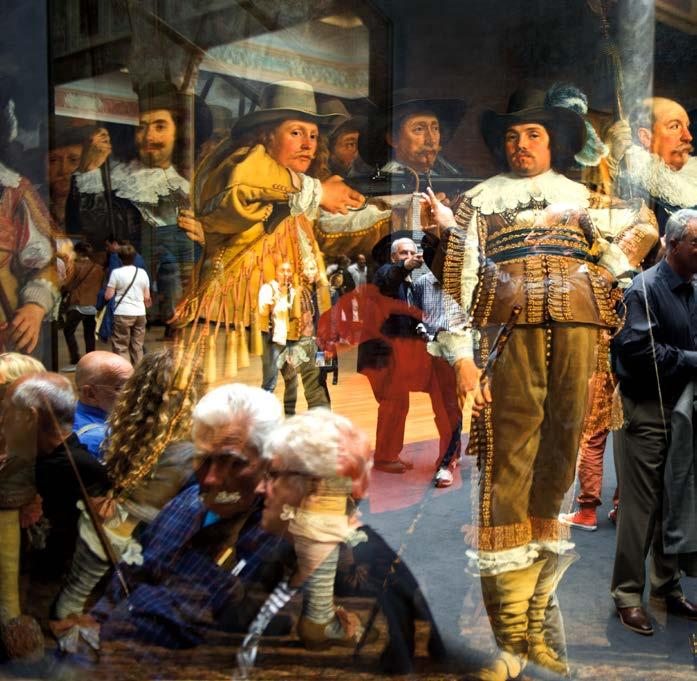
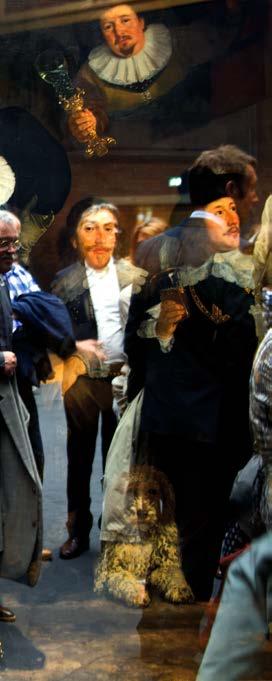
Por Javiera Fernández. Periodista (Chile) Imágenes cortesía del artista.
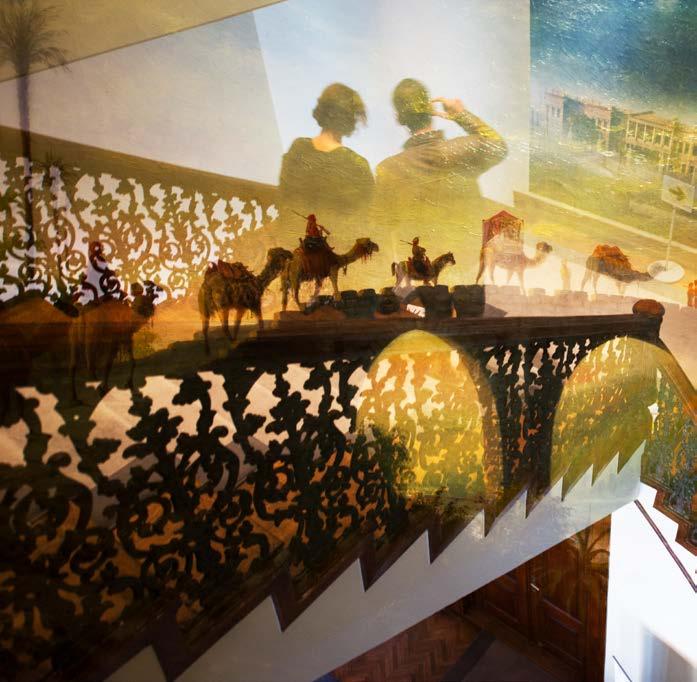
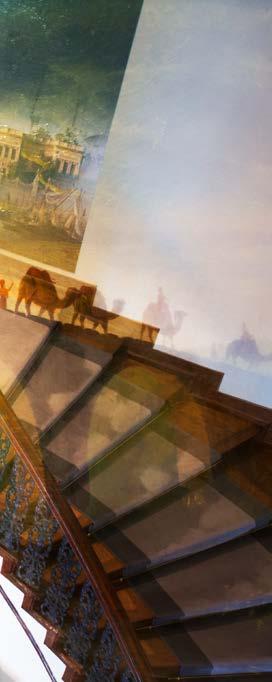
andrés tiene un recuerdo muy vívido de su infancia, que emergió años después de haber comenzado a fotografiar museos. Rememoró cómo, de niño, mientras contemplaba la obra El entierro del conde de Orgaz de El Greco en un museo de Toledo, sintió que los ojos de los personajes terrenales y celestiales que habitan la escena parecían mirarlo y seguirlo por la sala. Esta imagen de su pasado nos enseña que, como fotógrafo, Andrés Wertheim no solo observa atentamente nuestro mundo, sino también las presencias y las vidas plasmadas en las pinturas canónicas de los museos, que recogen siglos de historia.
Ese recuerdo particular despertó el universo que hoy se refleja en sus fotografías, al igual que su visita al Rijksmuseum de Ámsterdam hace algunos años. Allí, observó cómo una multitud se congregaba frente a La ronda nocturna de Rembrandt, mientras que el resto de las obras del museo nacional de los Países Bajos pasaban desapercibidas para la mayoría de los espectadores. “Tuve la sensación de que los personajes de esas obras miraban a los visitantes y se sentían ignorados. Entonces, decidí fundirlos con el público desprevenido y cuando miré los resultados de la imagen combinada en el monitor de mi cámara, me interesaron las diferentes lecturas que proponía”, señala Andrés.
andrés has a very vivid memory of his childhood that he remembered when he started taking pictures of museums. He recalled how, as a child, while he was looking at The Burial of the Count of Orgaz by El Greco in the Toledo Museum of Art, he felt the eyes of earthly and celestial characters in the scene seemed to look back and follow him across the room. This snapshot of his past teaches us that, as a photographer, Andrés Wertheim does not only intently observe the world, but also the presences and lives conveyed in iconic paintings throughout history that are displayed in museums.
This specific memory, as well as his visit to Amsterdam’s Rijksmuseum a few years back, awakened the universe that is now reflected in his photographs. In the Dutch museum, he saw a crowd gather in front of The Night Watch by Rembrandt, while the rest of the works in the national museum of the Netherlands went almost unnoticed by most viewers. “I had the feeling that the characters in those pieces looked at the visitors and felt ignored. So, I decided to merge them with the distracted audience and, when I saw the result of the combined image in my camera monitor, I became interested in the different interpretations it proposed,” Andrés said.

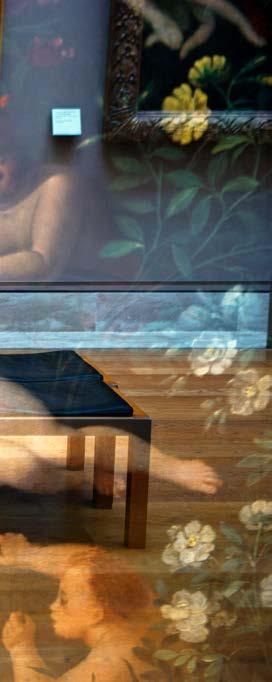
Este gesto estético del artista es el que da origen a Los espíritus del museo, una de sus obras principales. En ella, utiliza la técnica de doble exposición para superponer imágenes que ha tomado de los visitantes de los museos sobre las pinturas exhibidas en ellos. A partir de esta ejecución fotográfica, Wertheim crea una atmósfera que describe como un cruce entre los ‘cuerpos transitorios’ de los personajes pintados y los visitantes reales, de carne y hueso. Generando una especie de realidad alternativa, el fotógrafo propicia un intercambio irrepetible -posible por esa única toma fotográfica- entre los paseantes, la naturaleza y los objetos que conforman ambos mundos disímiles, donde, según expresa: “ni los unos ni los otros son los verdaderos protagonistas de la imagen final, sino las historias que se producen en la cámara, gracias a estas interacciones”.
En la carrera de Andrés Wertheim, con obras que forman parte de colecciones públicas y privadas en diversos países, el espacio museístico ha tenido siempre una relevancia clave, no sólo porque a través del recorrido de éstos se origina parte fundamental de su universo pictórico, sino porque además posibilitan, en un mundo de conexiones digitales cada vez más disociativas, el encuentro presencial con el arte. En tiempos actuales, dice Wertheim, de “una virtualidad ubicua que emana de las pantallas”, se hace las siguientes preguntas: ¿seguimos necesitando la vivencia táctil del papel?, ¿seguimos necesitando la pared de un espacio expositivo?
This aesthetic gesture by the artist ended up birthing Los Espíritus del Museo ( The Museum Spirits), one of his most important pieces. In it, he uses the double exposure technique to overlap images of museum-goers and the paintings displayed in the museums. Through this photographic production, Wertheim creates an atmosphere he describes as a cross between the ‘fleeting bodies’ of the portrayed characters and real, flesh and bone visitors. Producing a sort of alternate reality, the photographer fosters an unrepeatable exchange –possible only within that single shot–between the passersby, nature and objects that make up two dissimilar worlds, where, as he expresses: “Neither one not the other are the true protagonists of the final image. It’s the stories that are created in the camera, thanks to these interactions.”
With works that are part of public and private collections, the museum space has always been key throughout Andrés Wertheim’s career. This is not only due to the fact that museum visits are a fundamental part of his visual universe, but also because they allow for in-person encounters with art in a world of increasingly dissociative digital connections. Wertheim states that the “ubiquitous virtuality emanating from screens” nowadays makes him wonder: Do we still need the tactile experience of paper? Do we still need the walls of exhibition spaces?
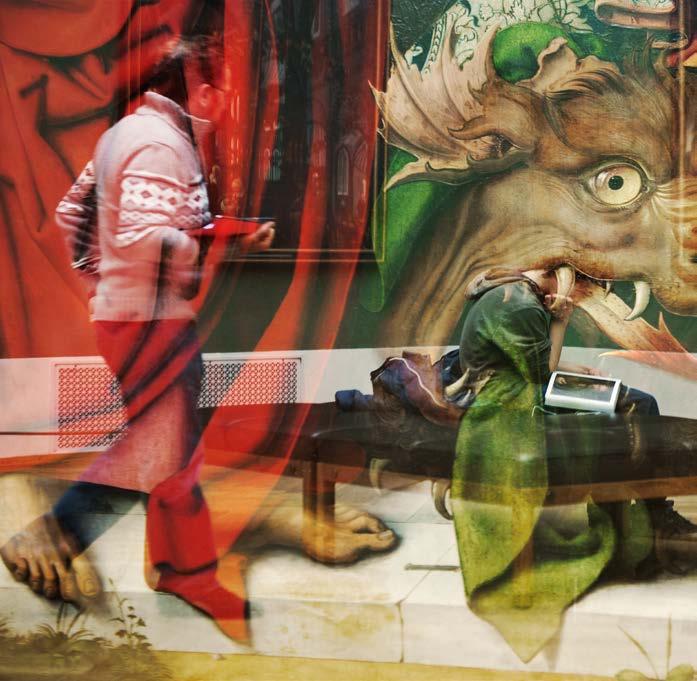

La obra fotográfica de Andrés Wertheim, que sólo cobra vida a través del encuentro presencial con la institución museística, ofrece una afirmación rotunda a estas inquietudes. Asimismo, enfatiza la importancia de la técnica, la observación y el azar en la creación de sus imágenes. Sin recurrir a la manipulación digital o a otras herramientas de postproducción, Wertheim emplea la técnica de la doble exposición para superponer en la cámara las transparencias y opacidades que se hacen posibles entre ambas imágenes, generando interacciones únicas entre los personajes de las pinturas y los visitantes reales de los museos. Esta fusión, que sucede en el lente, nos invita a reflexionar sobre la capacidad de la fotografía para capturar realidades alternas, creando un diálogo único entre lo que existe y lo que puede llegar a ser.
Para Wertheim, su serie Los Espíritus del Museo, no solo representa una forma de rendir homenaje a la historia del arte y a los autores de las obras que fotografía, sino también un cuestionamiento de los límites tradicionales del medio fotográfico. Al capturar estas escenas directamente en la cámara, sin intervención posterior, acerca esas obras canónicas a un público nuevo, invitando a la reflexión sobre la importancia de la experiencia directa en la era de lo digital. “Al apropiarme de fragmentos de la historia visual, estoy rindiendo un homenaje a los autores que pintaron estos cuadros, acercándolos a otro público que tal vez no entra a los museos. Tal vez alguna de estas fotografías provoque una reflexión y rehabilite la importancia de la experiencia presencial”, concluye el fotógrafo.
Andrés Wertheim’s photography, which only comes to life through in-person encounters with museum institutions, answers these questions with a resounding yes. Likewise, his work emphasizes the importance of technique, observation and chance when creating his images. Without any digital manipulation or other post-editing tools, Wertheim uses the double exposure technique in his camera to overlap the transparencies and opacities possible through the combination of two images, creating unique interactions between the characters of the paintings and real visitors in museums. This fusion that takes place on the lens encourages us to reflect on photography’s ability to capture alternate realities, creating a unique dialog between what already exists and what could be.
For Wertheim, his series Los Espíritus del Museo (The Museum Spirits) represents a way of paying tribute to art history and the authors of the pieces he photographs, and it also questions the traditional limits of photographic means. By capturing the scenes directly on the camera without any subsequent post-editing, he brings iconic artworks to a new audience, inviting us to reflect on the importance of in-person experiences in the digital age. By appropriating fragments of visual art history, I’m paying tribute to the authors that created the paintings, bringing them closer to audiences that might not go in museums. Perhaps one of these photographs can stimulate reflection and rehabilitate the importance of face-to-face experiences,” concludes the photographer.
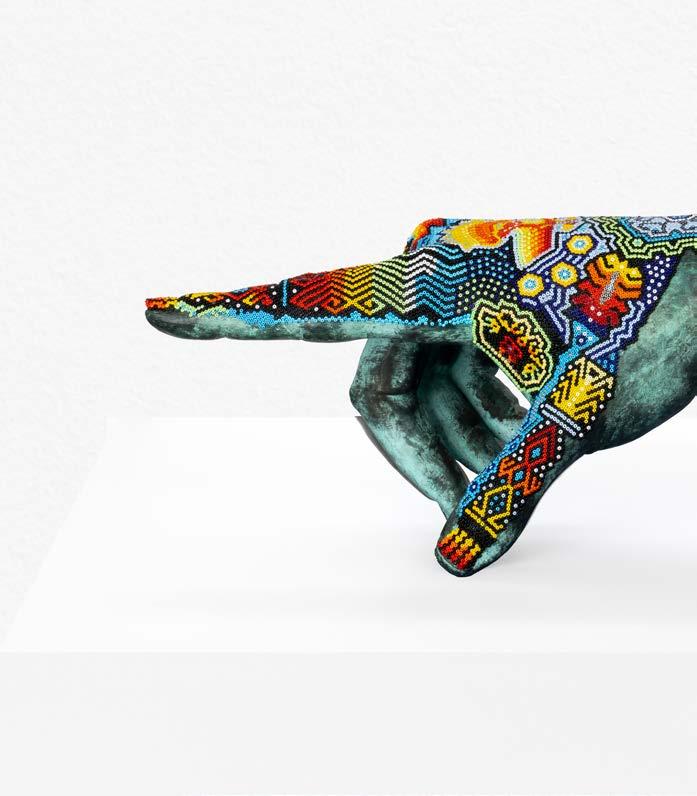
Colombia
Por Ricardo Rojas Behm. Escritor y Crítico (Chile)
Imágenes cortesía del artista.
Representado por Building Bridges Art Exchange.
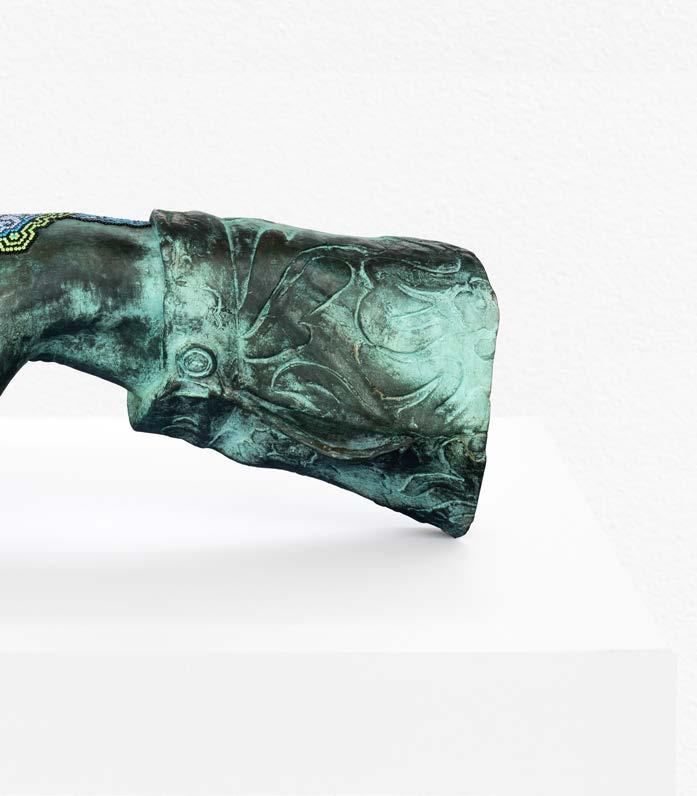
el pasado, cuestiona el presente
comparto lo dicho por George Orwell cuando afirma que: “La historia oficial la escriben los vencedores”, y no es necesario ser vidente para comprender que aquello que parece ser un mal augurio o una predestinación naturaliza la violencia y la depredación, como eje de un estigma por el cual no dejamos de preguntamos, ¿cómo esta humanidad sigue manteniéndose en pie?
Un equilibrio precario que Carlos Castro Arias, artista visual, profesor y músico colombiano, residente hace 10 años en San Diego, Estados Unidos, sortea a la distancia, y que viene a confirmar que no ha perdido esa capacidad de asombro, que continúa despierto y atento a lo que ocurre en su país, y persevera en reconstruir proyectos que conceptualmente subvierten ese modo tan particular de resistir que tiene su patria y Latinoamérica en general. Y lo expresa sin ambigüedades: “Creo que es importante reestudiar y volver la mirada a elementos de la historia que han forjado la manera en que pensamos y vemos el mundo, por eso me parece interesante poder mostrar un punto de vista diferente, y lograr alguna relación de pronto no tan esperada entre dos momentos históricos o dos símbolos u objetos que nos permitan cuestionarlos y volver la mirada a cosas que damos por sentado, y eso es lo que me parece interesante que se puede lograr con una obra”.
Lo más decidor es que este artista relaciona elementos tan primarios como cuchillos decomisados y los transforma en cajas de música, donde resuenan melodías de marchas militares de los grandes imperios, haciendo un paralelismo entre esas grandes guerras y la batalla que libra quien usa ese utensilio callejero para sobrevivir. Contrapunto sobre el que Carlos comenta: “Las armas son objetos que se ocupan tanto para defenderse y atacar, como para llevar a cabo una guerra con letras mayúsculas”. Una deliberación donde también sale a la luz el sincretismo cultural y la violencia entronizada a la que estamos inmersos a nivel global. Por eso es categórico al afirmar que “la violencia del uno sobre el otro es una constante que se da también en la naturaleza, no sólo en los seres humanos”. Aquí es oportuno destacar que él no nos induce a tomar una posición determinada, ya que traza un itinerario histórico reflexivo donde se apropia de ciertos símbolos, resignificándolos para que otros los interpreten e interpelen, o le agreguen la carga que estimen conveniente, como evidencian las esculturas de Cristóbal Colón e Isabel la Católica, intervenidas con chaquiras plásticas, símbolo de la cultura Inga del Puntumayo. Un punto en que Carlos es taxativo: “No podemos pensar estos 500 años sin Colón, crecimos con la sensación de descolonizar, pero es imposible borronear ese pasado. Porque estos personajes nos han tocado a todos y no podemos olvidar, tumbar cosas que no se pueden cambiar. Es importante que la gente lo sepa, porque la historia es cíclica”.
Un precedente que puede arrancarnos de cuajo, pero querámoslo o no, ha ido moldeado esa narración colectiva y personal, apostando arquetipos que este artista reconfigura, tomando la cita de Williams Faulker: “El pasado nunca muere. No es ni siquiera pasado”. Para nominar incluso a uno de sus proyectos antológicos más notables, donde se apropia de elementos del pasado para cuestionar el presente. Aunque, dentro de esa alquimia constructiva, sobresale el que no encarne el drama de quienes cargan el peso de una mitología martirizante, que hace que los espas-
Questioning the present by resignifying the past
i agree with George Orwell when he stated: “History is written by the winners.” It does not take a fortune teller to understand that what may seem like a bad omen or predestination normalizes violence and exploitation as the basis of a stigma making us wonder how humanity still stands.
Carlos Castro Arias, Colombian visual artist, professor and musician who has been a resident of San Diego, USA, for 10 years, sorts this precarious balance from a distance. This confirms that he has not lost his ability to be amazed, he is still aware and follows what happens in his country, as he perseveres to rebuild projects that conceptually subvert the unique form of resistance of his homeland and Latin America in general. And he expresses it unambiguously: “I think it is important to re-examine and look back at the elements of history that have shaped the way we think and see the world, so I think it is interesting to show a different point of view, and to achieve a somewhat unexpected relationship between two historical moments or two symbols or objects that allow us to question them and pay attention to things we take for granted, and that is what I think is interesting to achieve with a piece.”
The most remarkable thing is that this artist relates elements as simple as confiscated knives and transforms them into music boxes, where the melodies of military marches of the great empires resound, drawing a parallel between great wars and battles waged by those who use this common utensil to survive. In this regard, Carlos comments: “Weapons are objects employed both to defend and attack, as well as to wage war at the highest level.” This statement also brings to light the cultural syncretism and the enthroned violence that we are surrounded by around the world. Therefore, he is very firm when he states “violence from one over another is a constant that also happens in nature, not just for humankind.” However, it is important to note that he does not force us to take any specific stance. Instead, he draws a historical and reflective itinerary where he appropriates certain symbols and gives them new meaning so others interpret and question them, or they assign them the load they deem adequate. His sculptures of Christopher Columbus and Isabella the Catholic that were intervened with plastic beadwork, a symbol of the Inga culture of Putumayo are an example of this. Carlos is very clear on one point: “We cannot think about these 500 years without Columbus. We grew with the intention to decolonize, but it is impossible to erase that past. These characters have moved all of us and we cannot forget, nor knock down, thins we cannot change. It is important people know this because history is cyclical.”
This precedent can uproot us, but whether we like it or not, it has been shaping a collective and personal narrative. The artist bets on archetypes that he reconfigures, inspired in William Faulker’s quote: “The past is never dead. It’s not even past” to refer to one of his most remarkable anthological projects, where he appropriates elements from the past to question the present. Although, within this constructive alchemy, it stands out that he does not embody the drama of those who carry the weight of a martyring mythology, which makes the spasms and horror of


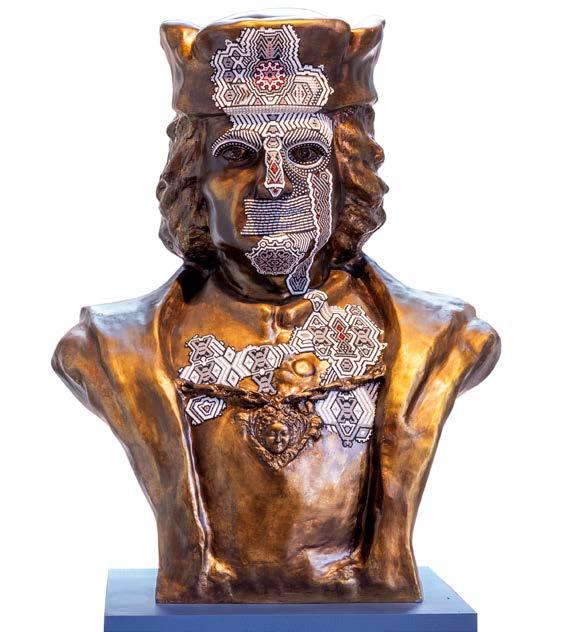
mos y el horror del pasado colonialista nos salgan por los poros como una traumática pústula, ya que recombina los símbolos del poder, los íconos de la cultura popular y los géneros de la tradición áulica de la historia del arte, formulando piezas híbridas que aluden a esculturas conmemorativas, gobelinos, pinturas e intervenciones tan alegóricas como una patrulla policial que en su interior cobija una iglesia. Un curioso templo en el cual además se oye música. Con la inmanente intención de que el espectador se pregunte “¿Qué clase de broma es esta?” Y en paralelo vea que es inútil echar mano al auto-tune, para corregir imperfecciones o desafinaciones del mundo político o religioso. Otra muestra irrefutable de que la música para Carlos es un componente vital: “La música se vive, se siente y es su espíritu y su energía la que me nutre con imágenes sonoras y visuales, y me reconozco en la cumbia, la salsa y el rock por su rebeldía, y porque la música me entrega la posibilidad de experimentar la realidad desde un punto de vista menos racional”.
Por eso no es tan erróneo el quedarnos con la sensación de que todo es un cover. Porque al observar con detención el quehacer de este artista podemos afirmar, sin temor a equivocarnos, que es una especie de “estibador”, que reacomoda a su modo, inclusive revelando el reverso de nuestra carga histórica, pero sin la intención de proponer una sola verdad, ni tampoco exclusivamente con la idea de cuestionar o parodiar, sino más bien con la idea de desplegar horizontes que amplíen la perspectiva del observador, dejándolo en libertad de interpretación y acción frente a su obra, en eso es absolutamente consecuente y lo manifiesta sin tapujos: “El arte es una manera de reflexionar, de entender el mundo, la historia, las cosas que nos rodean, lo sensible, y que va mucho más allá de una crítica social. Lo más lindo del arte es cuando nos permite ampliar esas concepciones cerradas, y nos permite expandir nuestra mente y generar nuevas conexiones de neuronas, que están por encima de cuestionar modelos capitalistas o sistemas sociales”.
Hay que entender que este creador, en esa suerte de amasijo conceptual e histórico en paralelo, retrotrae no sólo el aquí y ahora de su historia personal, sino que se remonta a la primera infancia, con las que todavía sigue inevitablemente unido: “Siento que la vida da vueltas como en círculos y hay cosas que hemos vivido en el pasado con las que seguimos lidiando. Sensaciones, traumas e imágenes, y donde el arte se vuelve una oportunidad para reflexionar y volver a esos momentos, a esas imágenes que lo mueven a uno y que “te mueven el estómago”, no tanto desde lo racional, sino más bien desde lo instintivo. Porque esa reflexión sigue estando ahí con la niñez y la manera en cómo fuimos educados, y esto es una forma de responder a esa manera dogmática en la que la educación a veces se presenta. Encuentro interesante reflexionar sobre eso en mi arte, porque es como buscar otras imágenes, otras relaciones y generar esas nuevas visiones en el espectador”.
Convengamos entonces que lo que hace Carlos Castro con sus apropiaciones igualmente es una forma de conquista, en la que va trazando el mapa con sus inquietudes, afectos, frustraciones y anhelos, recurriendo a una suerte oxímoron, mediante el cual combina realidades aparentemente opuestas (en tiempo y en espacio), y demuestra que todo va, vuelve y sigue así a perpetuidad, igual que un bucle y, por tanto, su propuesta apela a que no veamos la historia desde la butaca, sino siendo partícipe de ella.
the colonialist past come out of our pores like a traumatic pustule. This due to his reconfiguration of symbols of power, icons in popular culture, and the genres of the academic tradition in art history, creating hybrid pieces that allude to commemorative sculptures, tapestries, paintings and interventions as allegorical as a police car that shelters a church inside. In such a curious temple, we can also hear music, with the artist clearly attempting to make viewers wonder “what kind of a joke is this?” And, simultaneously, he does it so viewers see it is futile to try to auto-tune and correct the imperfections or out-of-pitch notes of the political or religious world. The following statement is another irrefutable proof that, for Carlos, music is a vital component: “Music is experienced and felt, and it is its spirit and energy that nourishes me with sound and visual images, and I recognize myself in cumbia, salsa and rock because of their rebelliousness and because music gives me the possibility to experience reality from a less rational point of view.”
For this reason, it would be out of question to feel that everything is a cover because by carefully observing this artist’s work we can declare, without fear of being mistaken, that he is a kind of “dockworker” who rearranges in his own way, even revealing the other side of our historical burden. Yet, he does it without the intention of proposing a single truth, nor exclusively with the idea of questioning or parodying, but rather with the idea of unfolding horizons that broaden the perspective of viewers, leaving them free to interpret and act in front of his work. About this, he is absolutely consistent and manifests it without any concealment: “Art is a way of reflecting and understanding the world, history, the things that surround us, the sensitive, and that goes far beyond social criticism. The most beautiful thing about art is that it allows us to broaden those closed views, and to expand our minds and develop new neural connections, which are above questioning capitalist models or social systems.”
In this sort of parallel conceptual and historical melting pot, it must be understood that this creator not only refers to the present of his personal history, but also to his early childhood, to which he is still inevitably linked: “I feel that life goes around in circles and there are things we have experienced in the past that we keep dealing with. Sensations, trauma and images and, for me, art, are an opportunity to reflect and go back to those moments, to those images that move us and ‘turn your stomach’, not from logic, but from instinct. Because that reflection is still there in childhood and in the way we were raised, and this is a way of responding to that dogmatic way education is sometimes presented. I find it interesting to reflect on that in my art, because it is like looking for other images, other relationships and creating those new perspective in the viewer.”
Let us agree, then, that what Carlos Castro does with his appropriations is also a form of conquest, in which he traces the map with his concerns, affections, frustrations and longings, resorting to a kind of oxymoron, through which he combines apparently opposite realities (in time and space), and shows that everything goes, returns and continues in perpetuity in a sort of loop and, therefore, his proposal appeals to us not to see history from an armchair, but to take part in it.

Imágenes cortesía del artista.
Representado por Mahara+Co.
Paisajes posibles
la obra de Néstor Arenas se distingue por una compleja intersección entre lo histórico y lo biográfico, donde cada elemento pictórico parece cargar una memoria en sí mismo. Arenas logra crear un discurso visual en el que ideologías antagónicas –particularmente el comunismo y el capitalismo– se enfrentan y coexisten, provocando una reflexión crítica sobre el devenir de estos sistemas y su influencia en la identidad contemporánea. Esta integración de elementos opuestos dota a su trabajo de una riqueza simbólica, en la que íconos políticos, objetos del consumo hedonista y arquitecturas monumentales construyen un imaginario visual que desafía la mirada del espectador y evoca las tensiones inherentes a nuestro contexto histórico. Con esta amalgama de signos, Arenas no solo explora los impactos de los grandes relatos ideológicos en la vida personal, sino que invita al público a cuestionar la persistencia y el desgaste de dichas narrativas en un mundo cada vez más globalizado.
Por otra parte, las composiciones de Arenas se estructuran a partir de un juego de formas y volúmenes que remiten a una arquitectura brutalista en decadencia, pero revestida de un vibrante colorido pop. Esta mezcla intencional entre la austeridad y monumentalidad del brutalismo con la ligereza de la cultura de masas genera una dualidad entre lo rígido y lo efímero, entre lo sólido y lo superficial, que otorga a sus obras un aire de ambigüedad y, a la vez, de claridad. Las formas geométricas y modulares presentes en sus composiciones evocan una estética de paisajes urbanos que podrían pertenecer tanto a un pasado utópico como a un futuro incierto, invitando a una reflexión sobre el impacto de la arquitectura en nuestras experiencias emocionales y en la percepción de nuestro entorno. Estas estructuras actúan como ruinas contemporáneas, recordatorios de las promesas de grandeza y de las realidades fragmentadas que emergen tras la caída de las utopías modernas.
Néstor Arenas’ work stands out for its complex intersection between history and biography, as each visual element seems to hold a memory within it. Arenas manages to create a visual narrative in which opposing ideologies –particularly communism and capitalism– clash and coexist, thus creating a critical reflection on the future of these systems and their influence in contemporary identity. This integration of opposing elements gives his work a symbolic richness in which political icons, objects of hedonistic consumption, and monumental architectures build a visual imagery that challenges viewers and evokes the inherent tensions of our historic context. With this fusion of symbols, Arenas does not only explore the impact of great ideological narratives in our personal lives, but he also encourages the audience to question the endurance and deterioration of such narratives in an increasingly globalized world.
On the other hand, Arenas’ compositions are structured by an interplay of shapes and volumes that allude to a brutalist and decaying architecture, disguised in a bright colorful pop. This intentional mixture of the austere and monumental nature of brutalism with the levity of mass culture creates a duality between the rigid and ephemeral, the solid and the superficial, which gives his artworks an air of ambiguity and clarity at the same time. The modular geometric shapes in his compositions evoke an urban landscape aesthetic that could belong either to a utopian past or uncertain future, encouraging a reflection on the impact of architecture in our emotional experiences and perception of our environment. These structures serve as contemporary ruins, reminders of promises of grandeur and the fragmented realities that arise after the fall of modern utopias.

A través de su noción de paisajes posibles , Arenas explora la capacidad del arte para vislumbrar un futuro venidero que no se limita a las certezas de las ideologías pasadas ni a las aspiraciones capitalistas actuales, sino que se abre a la posibilidad de nuevos mundos.
En sus composiciones, el artista articula un diálogo entre elementos que aluden a lo histórico y a lo culturalmente familiar, entre lo que se ha perdido y lo que persiste como vestigio, como una invitación al espectador a enfrentar las contradicciones de su propia identidad y del presente. Al generar estas tensiones visuales, Arenas permite que el público experimente sus obras como espacios de reflexión sobre el tiempo y el cambio, en los que la historia no solo se recuerda, sino que se resignifica. Así, sus paisajes posibles sugieren un futuro que, más allá de ser idealista o pesimista, es un campo abierto de posibilidades en el que se revelan tanto los alcances como las limitaciones de las grandes narrativas que han moldeado nuestras vidas.
La yuxtaposición de formas y volúmenes en tus composiciones sugiere una influencia arquitectónica, especialmente del movimiento brutalista. ¿Cuál es tu vínculo con la arquitectura y cómo esta relación contribuye a tus obras?
Mi vínculo con la arquitectura es profundo y se origina en una fascinación con la manera en que los espacios construidos reflejan ideologías, sistemas de poder y aspiraciones colectivas. En especial, el movimiento brutalista ha sido una gran influencia en mi obra debido a su enfoque en la funcionalidad, la monumentalidad y la honestidad de los materiales. Sus estructuras de concreto expuesto y su estética cruda transmiten una sensación de permanencia y resistencia, pero también de vulnerabilidad cuando se convierte en ruinas. Esto último resuena conmigo, ya que estas estructuras muestran cómo el tiempo y las fuerzas externas desgastan hasta los proyectos humanos más sólidos y ambiciosos, en un paralelismo a la impermanencia de las ideologías.
La arquitectura me permite explorar la idea de espacio como símbolo de orden y control, pero también como escenario de transformación y decadencia. En mis composiciones, la yuxtaposición de formas y volúmenes es una manera de reimaginar paisajes urbanos como “ruinas contemporáneas”, reflejando tanto los legados de sistemas políticos pasados como las estructuras actuales que nos rodean.
A nivel conceptual, la arquitectura me ayuda a construir un lenguaje visual que permite un diálogo entre lo histórico y lo autobiográfico, entre lo sólido y lo efímero. La influencia de la arquitectura brutalista en mi obra no solo aporta una estética de formas contundentes y geométricas, sino también una reflexión crítica sobre el impacto de las grandes narrativas sociales en nuestras vidas.
Through his notion of possible landscapes , Arenas explores art’s ability to glimpse at a future that is not limited by past ideologies or current capitalist aspirations, but rather opens up to the possibility of new worlds.
In his compositions, the artist establishes dialog between historic and culturally familiar elements, what was lost and whatever traces remain, as an invitation to viewers to face the contradictions of their own identity and present. By creating these visual tensions, Arenas allows the audience to experiment his pieces as spaces to reflect on time and change, spaces in which history is not just remembered, but resignified. Thus, his possible landscapes suggest a future that, rather than being idealistic or pessimistic, is an open field of possibilities where the scope and the limitations of the great narratives that have shaped our lives are revealed.
The overlapping of shapes and volumes in your compositions hint at the influence of architecture, especially the brutalist movement. What is your relation with architecture and how does it contribute to your pieces?
My connection with architecture is deep and it stems from a fascination by the way that built spaces reflect ideologies, power systems and collective aspirations. The brutalist movement in particular has had a great influence in my work because of its focus on functionality, magnificence and honesty of the materials. Its exposed concrete structures and pure aesthetic convey a sense of permanence and resistance, but also of vulnerability when they become ruins. The latter resonates with me because these structures show how time and external forces deteriorate even the most solid and ambitious human projects, which serves a parallel to the impermanence of ideologies.
Architecture allows me to explore the idea of space as a symbol of order and control, but also as a scenario of transformation and decadence. In my compositions, overlapping shapes and volumes is a way of reimagining urban landscapes as “contemporary ruins,” reflecting both the legacies of past political systems and the current structures that surround us.
Conceptually, architecture helps me build a visual language enabling a conversation between the historic and autobiographical, the solid and ephemeral. The influence of brutalist architecture in my work does not only contribute an aesthetic of strong geometric shapes, but also a critical reflection on the impact of great social narratives in our lives.

En tu obra se percibe una resonancia postcomunista que parece evocar, en ciertos momentos, una especie de ostalgie, pero que se diluye en un imaginario influido por la cultura pop, ¿qué papel juegan estos contrastes en tu visión crítica del presente, y cómo se traducen en tus composiciones?
La ostalgie, o nostalgia por ciertos aspectos de la vida en las sociedades comunistas, no es una mera idealización de esa época, sino más bien una mirada crítica y reflexiva sobre los vestigios de ese sistema. En mi obra, esta resonancia postcomunista se yuxtapone con iconografías de la cultura pop y del capitalismo globalizado para explorar los contrastes entre dos realidades que, en mi experiencia, parecen irreconciliables pero coexistentes. Me interesa cómo estos dos mundos, que a simple vista podrían parecer opuestos, en realidad comparten una serie de ilusiones y mecanismos de control, cada uno con sus propios símbolos, narrativas y estructuras de poder.
La cultura pop se ha vuelto un vehículo para expresar esa crítica, ya que representa la faceta más consumista y superficial del capitalismo, donde todo se convierte en mercancía, desde los ideales hasta las experiencias personales. Al mezclar elementos de la ostalgie con esta iconografía capitalista, intento crear composiciones que actúan como “paisajes utópicos”, pero también distópicos, en los que coexisten y colisionan los restos de utopías comunistas con los símbolos de un capitalismo globalizado y homogeneizante. Estos contrastes no solo permiten una revisión de los sistemas ideológicos que han moldeado el mundo actual, sino que también invitan a cuestionar si alguna vez es posible escapar del ciclo de creación y colapso de las utopías.
¿Consideras que la articulación de estos paisajes puede llegar a representar un futuro venidero?
Mi concepto de “paisajes posibles” surge precisamente como una respuesta a la incertidumbre del mundo contemporáneo y a la constante transformación de nuestras realidades. En un entorno donde el presente es efímero y cambiante, me interesa imaginar un “futuro venidero” que no sea un destino fijo, sino un espacio de reflexión crítica sobre hacia dónde podrían llevarnos las fuerzas actuales. Estos paisajes son “posibles” porque no son profecías o representaciones absolutas de un futuro, sino más bien espejos de las múltiples direcciones que podría tomar nuestra sociedad. En este sentido, funcionan como una suerte de simulacro, una premonición visual que plantea interrogantes en lugar de ofrecer respuestas definitivas.
En el plano formal, esta proyección hacia el futuro se materializa mediante la yuxtaposición de símbolos y arquitecturas que evocan tanto lo utópico como lo distópico.
Mis obras proponen una visión del futuro que no es puramente optimista ni pesimista, sino que representa un campo de tensiones. En este “futuro venidero”, la tecnología y la arquitectura son tanto medios de emancipación como instrumentos de control, mientras que las utopías fallidas del pasado siguen proyectando su sombra en nuestros ideales actuales.
Así, el contenido discursivo de mi obra explora el ciclo eterno de construcción y destrucción de las utopías, y sugiere que cualquier visión de futuro está inevitablemente moldeada por el peso de la historia.
In your work, there is a post-communist resonance that sometimes seems to evoke a kind of ostalgie that is diluted in an imagery influenced by pop culture. What role do these contrasts play in your critical vision of the present, and how do they translate into your compositions?
Ostalgie, or the nostalgia for aspects of life in communist societies, is not a mere idealization of that era, but rather a critical and reflective perspective about the remains of that system. In my work, that post-communist resonance is overlapped with pop culture and global capitalism iconography to explore the contrasts between both realities that, in my experience, seem irreconcilable and yet they coexist. I’m interested in how these two worlds, which at a glimpse seem opposite, actually share a series of control illusions and mechanisms, each one with its own symbols, narrative and power structures.
Pop culture has become a vehicle to express that criticism, as it represents the most consumerist and shallow side of capitalism, where everything from ideals to personal experiences becomes a commodity. By mixing elements of ostalgie with this capitalist iconography, I try to create compositions that act as “utopian landscape,” but also distopian ones, where the remains of communist utopias clash and coexist with symbols of a global and homogenizing capitalism.
These contrasts allow to examine the ideological systems that have shaped the current world and, at the same time, to wonder whether it is ever possible to escape from the cycle of creation and collapse of utopias.
Do you think that articulating these landscapes can come to represent the coming future?
My concept of “possible landscapes” came to be precisely as a response to the uncertainty of the contemporary world and the constant shifting of our realities. In an environment where the present is fleeting and ever-changing, I’m interested in imagining a coming future that is not a fixed destination, but critically thinking about where current forces could lead us. These landscapes are “possible;” they are not prophecies nor absolute representations of a future, but rather mirrors of the multiple directions that our society might take. In this sense, they servs as a sort of simulation, a visual premonition that raises questions rather than offering definitive answers.
In a formal plane, this projection of the future is materialized through the overlapping of symbols and architectures that evoke both utopian and distopian elements.
My works propose a vision of the future that is not purely optimistic or pessimistic, but rather represent a realm of tensions. In this “coming future,” technology and architecture are both means of emancipation and instruments of control, while past failed utopias still cast a shadow on our current ideals. Thus, the narrative content of my work explores the eternal cycle of the construction and destruction of utopias and suggests that any vision of the future is inevitably shaped by the weight of history.
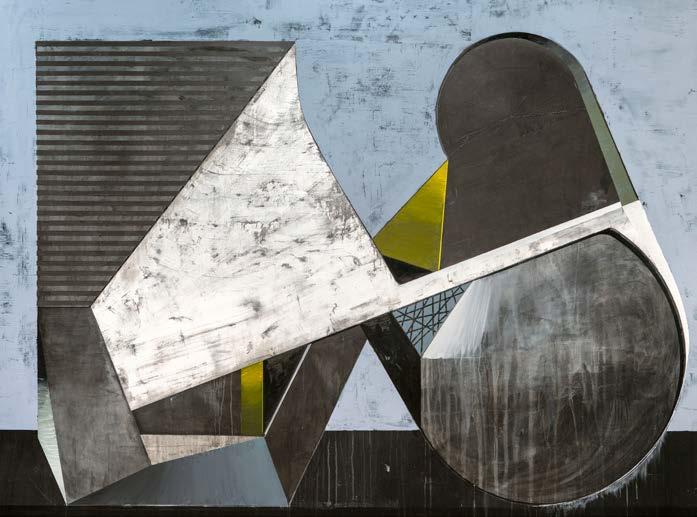
Imágenes cortesía de la artista. Argentina
Por Lucía Rey. Académica e investigadora independiente (Chile)

Vocabulario Negro (2023), Nigredo (2022) y Catarsis (2021) han sido algunas de las recientes exposiciones de Catalina Chervin. Desde los años 80’ viene creando una microtrama gráfica que se despliega en sus variaciones hasta el presente. Esta micro-retícula, trazada en punta de tinta, pulsa orgánicamente aperturas laberínticas, que aparecen y desaparecen entre la negrura del carboncillo y las rasgaduras del papel realizadas con Gillete. Sus obras, de grandes dimensiones, pueden observarse desde lejos y desde muy cerca. En ambas colocaciones la percepción de su trabajo va más allá del efecto retiniano, involucrando la corporalidad hacia inquietantes interrogantes inverbalizables, como producción simbólica liminal. La dimensión daimónica refiere al mundo intermedio, figurada artísticamente, en el pulso de aperturas concienciales.
El achurado, los oscurecimientos, las borraduras y los trozos de papel (collages) son elaborados como palimpsestos. Estos recursos técnicos, usados en el Surrealismo, permiten que fluya el inconsciente como fuerza creadora, sin mediaciones figurativas y racionales. Guiña con estos elementos a un estado creativo primario, como pulsión ensortijada que interroga. Sus persistentes micro-gestos de ensortijamientos, como recorrido y trama, recuerdan la intención expresionista, hierática, del dibujo medieval románico, que buscaba dar cuenta con este micro símbolo de una agitación interna del espíritu, imposible de exteriorizar sino a través de esta línea que intenta cerrarse en sí misma. En este sentido, su trazo casi abstracto, se encuentra con el motivo surrealista: la agitación del espíritu, aunque en este caso, más que estridencia, o declamación, muestra un profundo proceso de introspección, en la oscuridad. Así es que, observando los títulos de sus más recientes exposiciones, se puede sentir que lo siniestro de su arte apunta a un espacio interior, que en otros tiempos se le ha llamado: la noche oscura del alma, descrita poéticamente por Juan de la Cruz (siglo XVI), un calor místico tensionado, entre el deseo de la propia autodisolución nocturna y la necesidad de existir entre figuraciones liberadas materialmente. Una poética daimónica de la existencia interior, en tanto carne y espíritu.
En sus primeras obras, Realidades Alucinadas (1987- 2001), se observa un foco en el retrato simbólico de una intra-corporalidad. Una estética daimónica, que va abriendo bestiarios de la carne, unidos entre ciertos tejidos rizomáticos laberínticos que invitan al extravío entre algunas de sus porosidades. Una poética de lo íntimo inquietante (Das Unheimliche).
En La escritura de lo invisible (1999- 2010) hay una serie llamada Apocalipsis, que se localiza en la trama y veladura de lo inmaterial, ahora en la porosidad de la piel, en un desplazamiento focal hacia el cuerpo exterior. Sus líneas parecen atravesar los tejidos de una trama incorpórea y porosa de la existencia. Recorridos de líneas y borraduras, verticales que buscan ascender; y horizontales que son habitadas por recorridos sinuosos de ensortijamientos. Apareciendo sombras que interrogan, entre fragmentos de cuerpos y espacios laberínticos intangibles, fuera del tiempo lineal y aproximándose a una sensación temporal mítica. Casi se puede sentir el sonido de la punta del tiralíneas sobre el papel.
Vocabulario Negro (Black Vocabulary, 2023), Nigredo (2022) and Catarsis (Catharsis, 2021) are some of Catalina Chervin’s recent exhibitions. Since the 80s, she has been creating a visual micro-storyline that unfolds in different variations up to the present. This micro-web, traced with an ink tip, organically creates maze-like openings, which appear and disappear between the blackness of the charcoal and razor tears on the paper. Her large-scale work can be seen both from afar and close up, but whatever the perspective, the perception of her work goes beyond its visual impact, pushing the body towards unsettling unspeakable questions, as a liminal symbolic creation. The diamonic reality refers to an in-between world, artistically represented in the pulse of these intentional openings.
Hatching, darkening, blurring and pieces of paper (collage) are created as if they were palimpsests. These technical resources, used in surrealism, allow the subconscious to flow as a creative force without any figurative or rational mediation. With these elements, she hints at a primal creative state as a sort of spiral interrogating force. Her persistent spiraling micro-gestures, which serve both as a path and plot reminiscent of expressionist and hieratic motifs of medieval romanesque drawing, are micro-symbols revealing an inner agitation of the spirit that is impossible to externalize other than through a line trying to close in on itself. In this sense, her mostly abstract traces meet surrealist motifs: an agitation of the spirit, or, in this case, a profound introspection process in the darkness, rather than flamboyancy or declamation. By examining the titles of her recent exhibitions, we get a sense that the sinister nature of her art alludes to an inner space –otherwise known as the dark night of the soul, described by St. John of the Cross in his 16th-century poem– a mystical kindling tense between the desire for one’s own nocturnal self-dissolution and the need to exist among materially liberated figurations. This is nothing short of the diamonic poetry of inner existence, both in the flesh and in spirit.
In her early work, Realidades Alucinadas (Hallucinated Realities, 1987-2001), the focus lies on a symbolic portrayal of inter-corporeality: a diamonic aesthetic that opens up bestiaries of the flesh, threaded though maze-like rhizome tissues that beckon wandering through some of its porosities; a poem of the intimate and unsettling (Das Unheimliche).
In La escritura de lo invisible (The Writing of the Invisible 1999-2010), there is a series entitled Apocalipsis (Apocalypse), found in the web and veil of the immaterial, now on the skin’s porosity, as the artist shifts focus towards an external body. Her lines seem to pierce tissues of the incorporeal and porous fabric of existence. Paths of lines and blurs, vertical lines trying to ascend, horizontal lines inhabited by winding spirals. Interrogating shadows appear between fragments of intangible maze-like bodies beyond lineal time, approaching a mythical timeless sensation. The sound of pen on paper is almost perceptible.

En Atmósferas y entriopía (2011 y 2022), comienza, de manera intermitente, un proceso de disolución de la pregnancia macro figurativa. Mientras, en lo micro, reaparecen las figuraciones daimónicas. Estas ilustraciones atmosféricas focalizan la gráfica en un cierto inaprensible exceso energético, que podría ser, a su vez, una forma de figurar lo que en el mundo hasta ahora no se pue de figurar: la materia oscura. Esta serie de trabajos nos acercan a una visión artística de un aspecto trans-material de la realidad, pues necesita algo de abstracción para aquello que, siendo imposible de ser visto, atraviesa la materialidad de la existencia.
Catalina desarrolla una serie de grabados que serán hilados con la misma línea en tinta. En su portafolio Apocalipsis, realiza una mediación estética con los poemas de Fernando Arrabal que se materializará en un libro (2004). Las imágenes creadas a partir de la escritura se yerguen como torres entre su característico trazo, entre círculos y rectas sinuosas, que van levantando el fondo. La poética de estas obras existen en lo imaginario apocalíptico, graficando el fin de algo, la muerte, la invasión gráfica del espacio, en donde resalta la primera visión circular que cita una luna negra reflejando la disolución de un mundo. Entre los grabados de esta serie encontramos el portafolio Canto (2010-2011), trabajos en punta seca, que incluye un poema de Itzhak Katzenelson (1886- 1944).
En Mientras respiro (2009- 2019), la tinta y la borradura se van haciendo más sutiles y leves, casi pueden volarse o desprenderse del papel. Aquí, la artista observa un paisaje interior, un recuerdo de cierta belleza en lo efímero de la vida y su naturaleza. Incluye en este grupo la serie Street Arts , cuyas imágenes parecen contrastar con las anteriores, mostrando un territorio sin paisaje, en donde re-emergen fragmentariamente y como collages, entre rasgaduras verticales, las figuraciones daimónicas de su mundo inicial. También destacan esculturas y relieves realizados con resina en el 2022 y 2023, dando carne a la negrura de su lenguaje plástico.
Este recorrido estético en torno al cuerpo de obra de la artista, decanta en sus más recientes creaciones gráficas (2023 y 2024), que llegan al mundo abstracto, pero, sin abandonar la trama ensortijada del hilo negro en tinta, que recorre los laberintos nocturnos de su obra. Sucede aquí un proceso interior existencial que modifica, por una parte, el deseo de lo evidente en lo figurado, y por otra, intensifica la interrogación susurrada en un estado de disolución. Habitando la intensidad y la obsesión, en la poética de la levedad se pueden ir esbozando formas efímeras y fundirse con el aire.
In Atmósferas y entropía (Atmospheres and Entropy, 2011 and 2022) she intermittently starts a dissolution process of the allure of figuration on a micro scale. On the micro, diamonic figurations re-emerge. These atmosphere-driven illustrations focus visuals on a sort of incomprehensible energetic excess which could perhaps simply be a way of representing something that has not been depicted until now: dark matter. This series brings us closer to an artistic vision of a trans-material aspect of reality, as abstraction is required to represent something that cannot be seen, thus piercing the materiality of existence.
She develops a series of engravings threaded together by the same ink line. In her portfolio Apocalypse, she crafts an aesthetic mediation of Fernando Arrabal’s poems materialized in a book (2004). The images created through these texts erect like towers under her signature trace, among circles and winding lines that rise the background. The poetry of these pieces exists in an apocalyptic imagery that represents the end of something, a death, a visual invasion of the space with a featured circle alluding to a black moon that reflects the end of a world. Among the prints of the series we can also find Canto (Song, 2010-2011) made up of drypoint artworks featuring a poem by Itzhak Katzenelson (1886- 1944).
In Mientras respiro (As I Breathe, 2009-2019), ink and blurs become more subtle and slight; they almost seem as if they could fly away from the paper. Here, the artist explores an inner landscape, a memory holding the beauty of the fleetingness of life and its nature. In this group, she also includes the series Street Arts, with images that seem to clash with the previous. These show a territory with no landscape where the diamonic figurations of her initial imagery emerge as fragments and collages. Her 2022 and 2023 sculptures and resin artwork are also noteworthy and incarnate the blackness of her visual language.
This aesthetic journey across the artist’s body of work culminates with her most recent creations (2023 and 2024). These venture into the world of abstraction, but without abandoning the spiral web of a black thread on ink that navigates the nocturnal mazes of her work. An existential inner process underpins these works, both modifying the desire for evident figuration and intensifying a hushed questions in a state of dissolution. Inhabiting intensity and obsession in the poetry of lightness, ephemeral shapes can be traced and merge with the air.
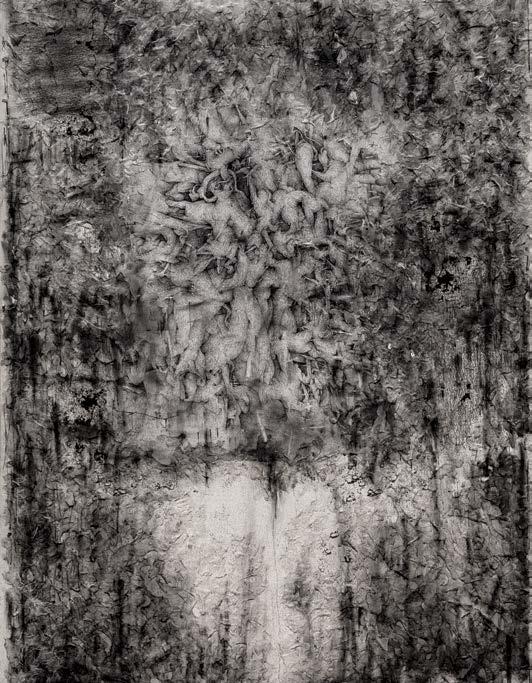

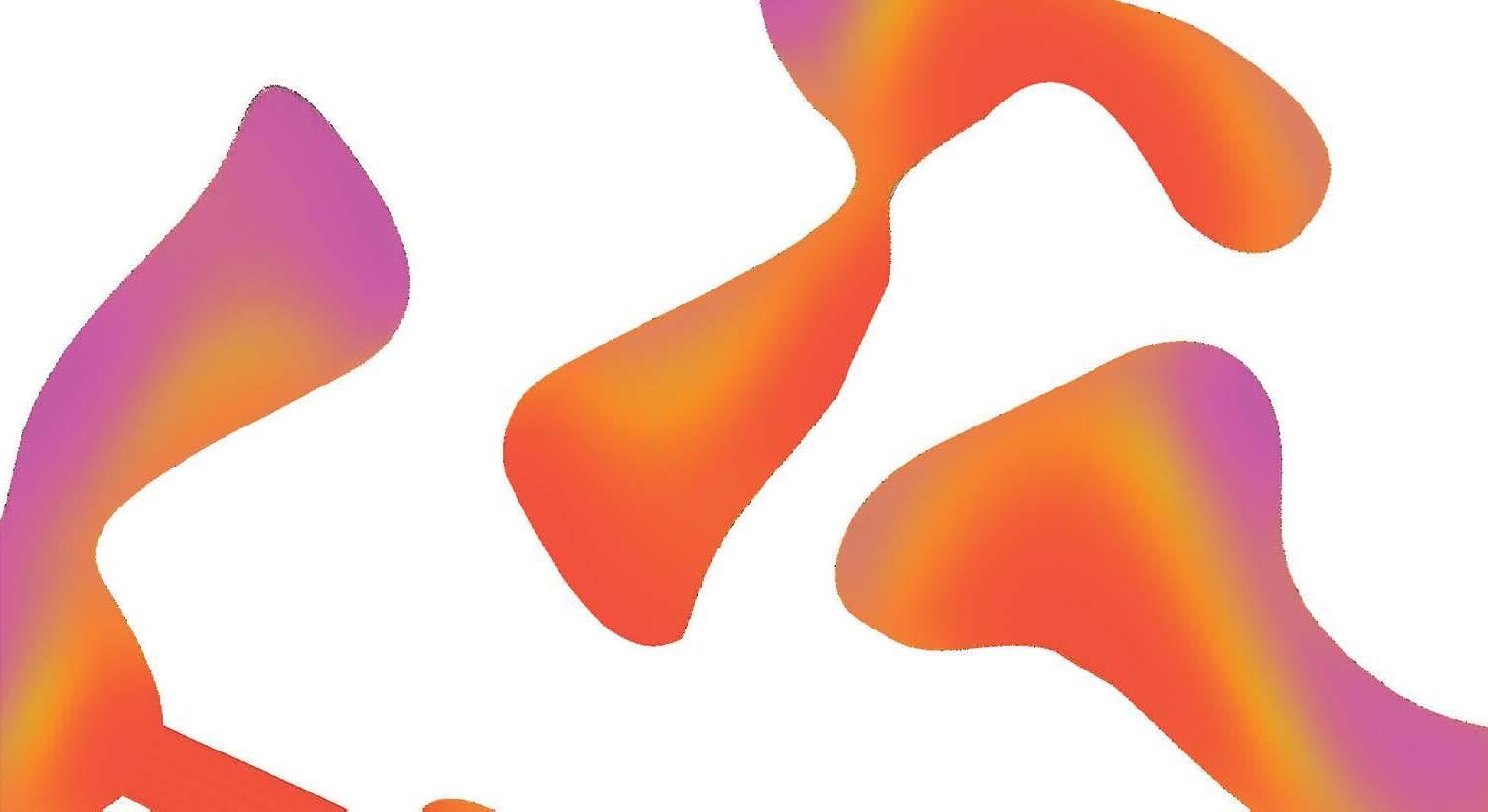
3385 Pan American Drive, Coconut Grove, Miami FL 33133

www.pintamiami.art

